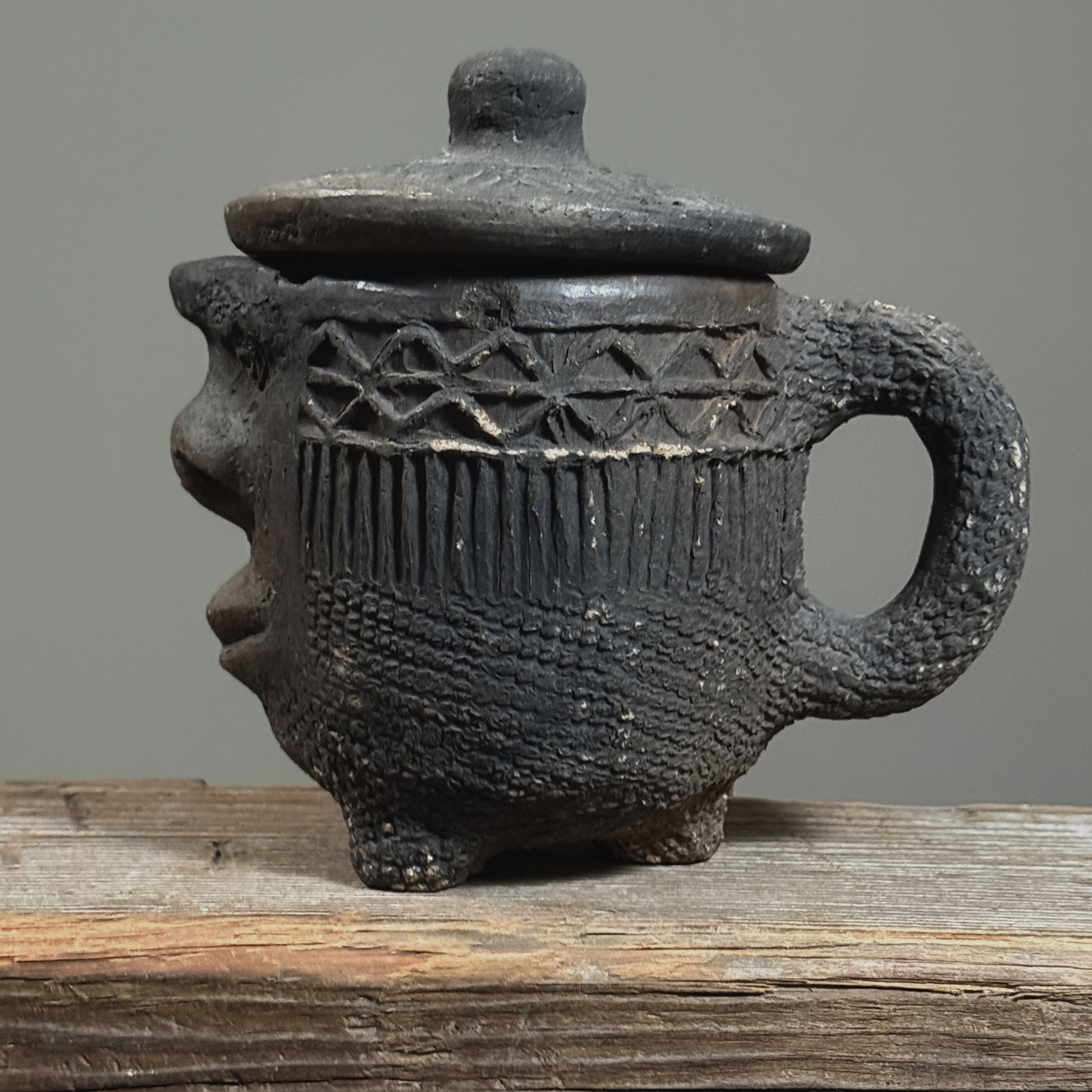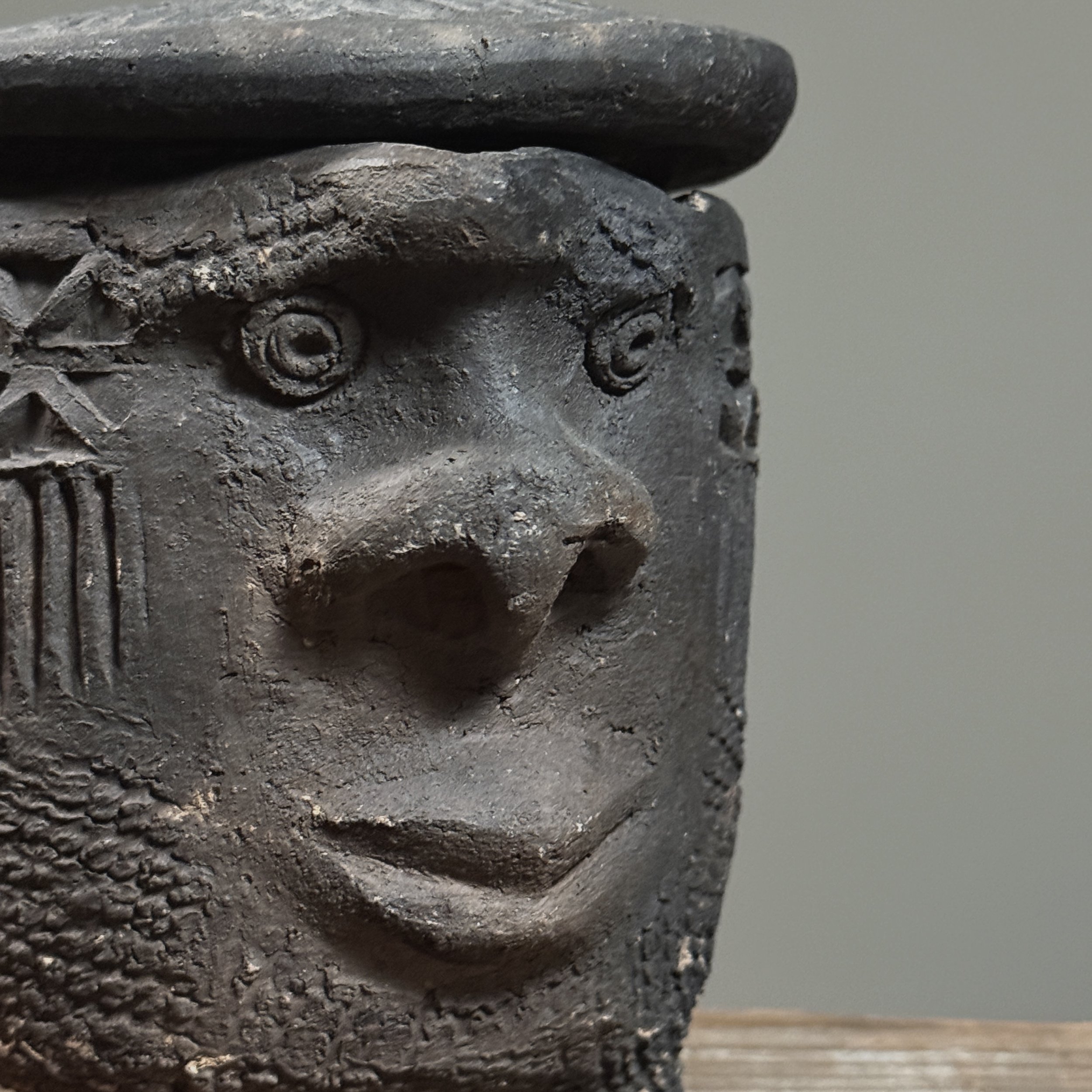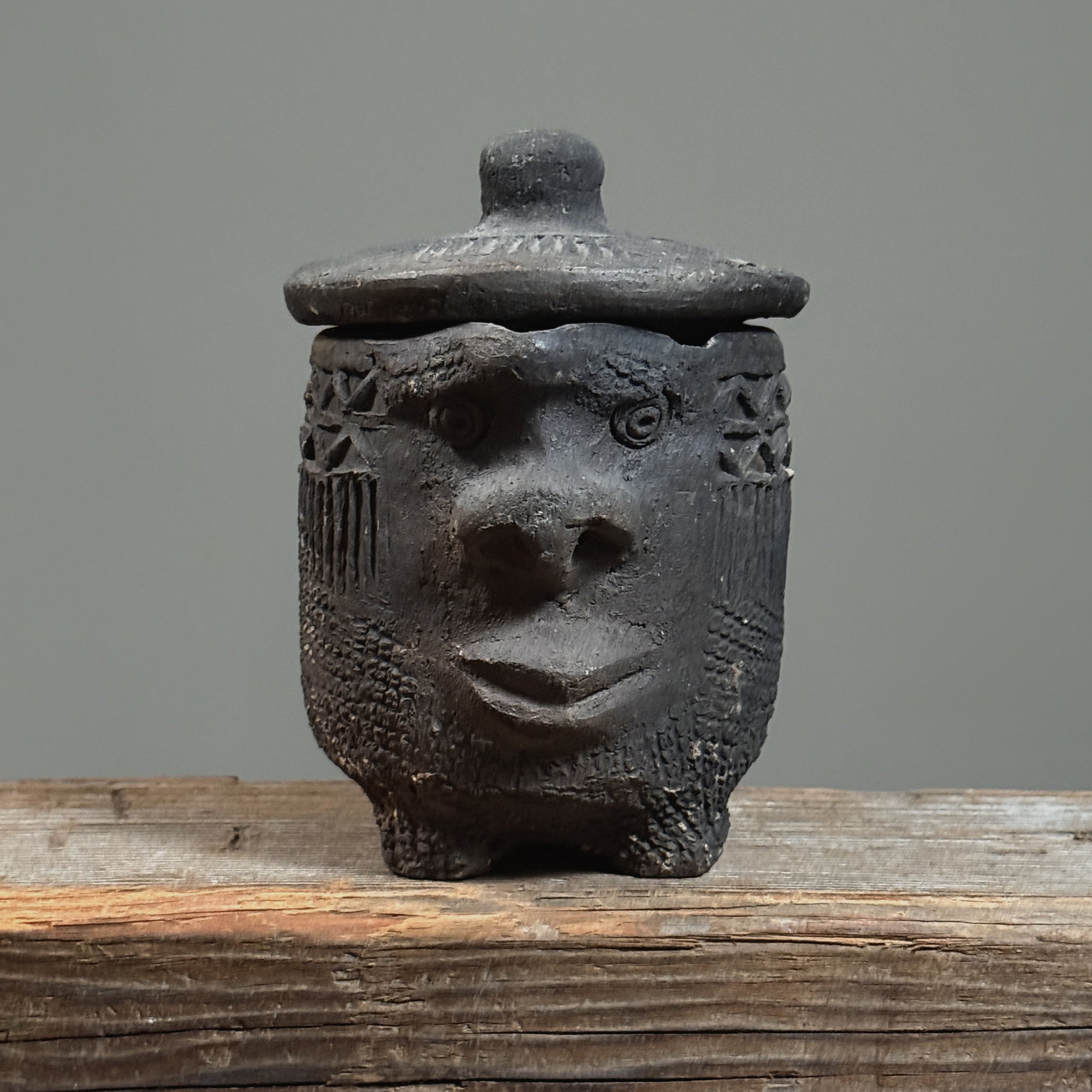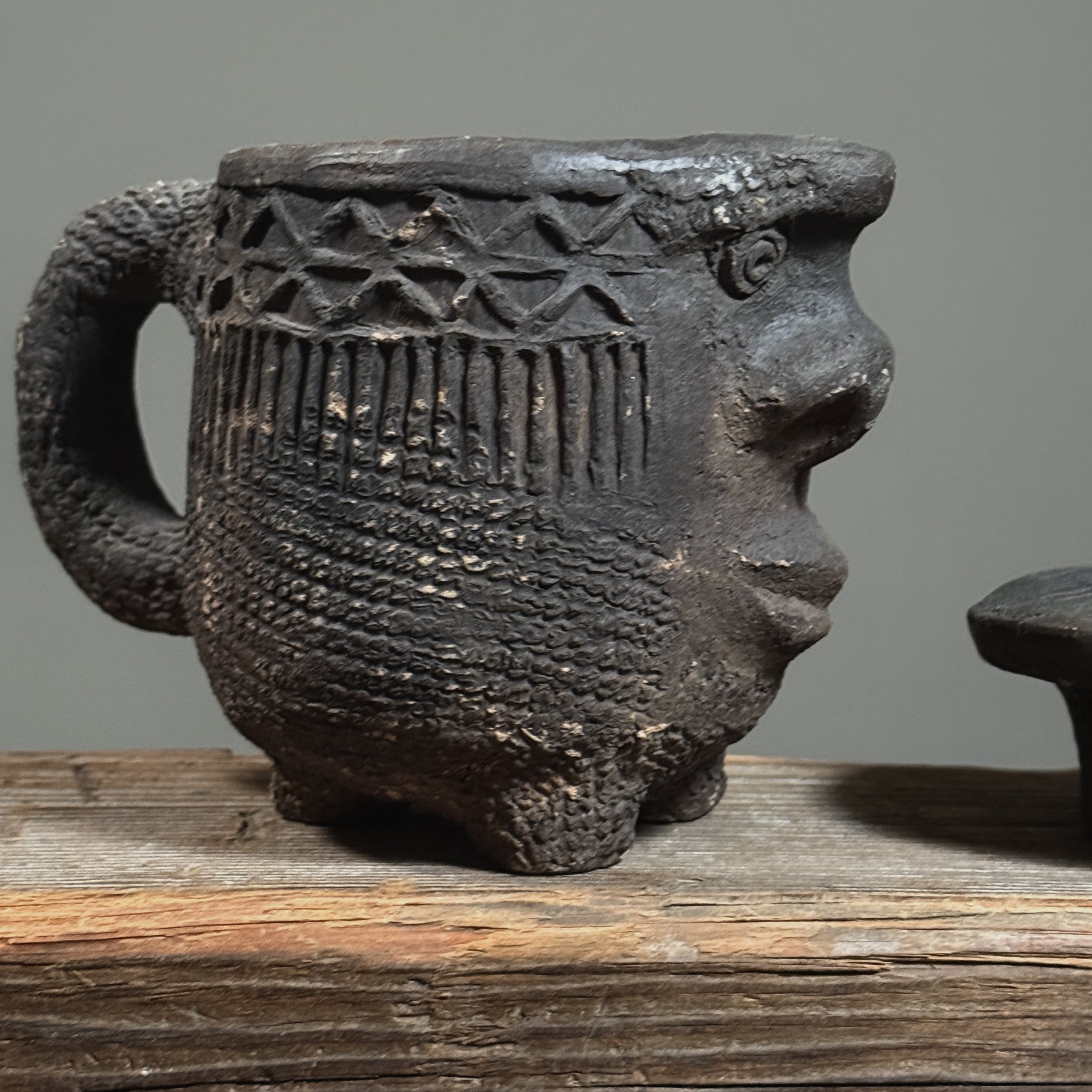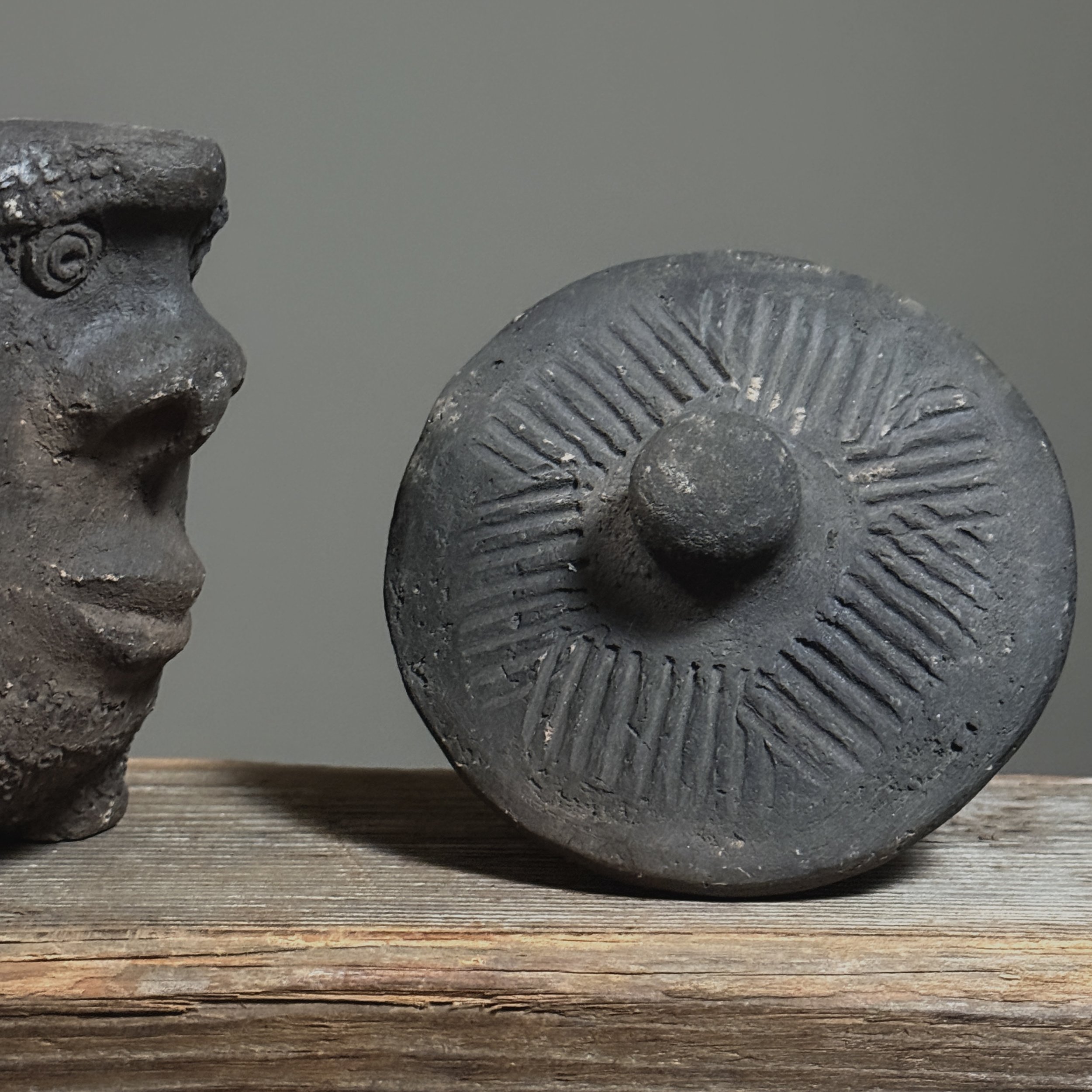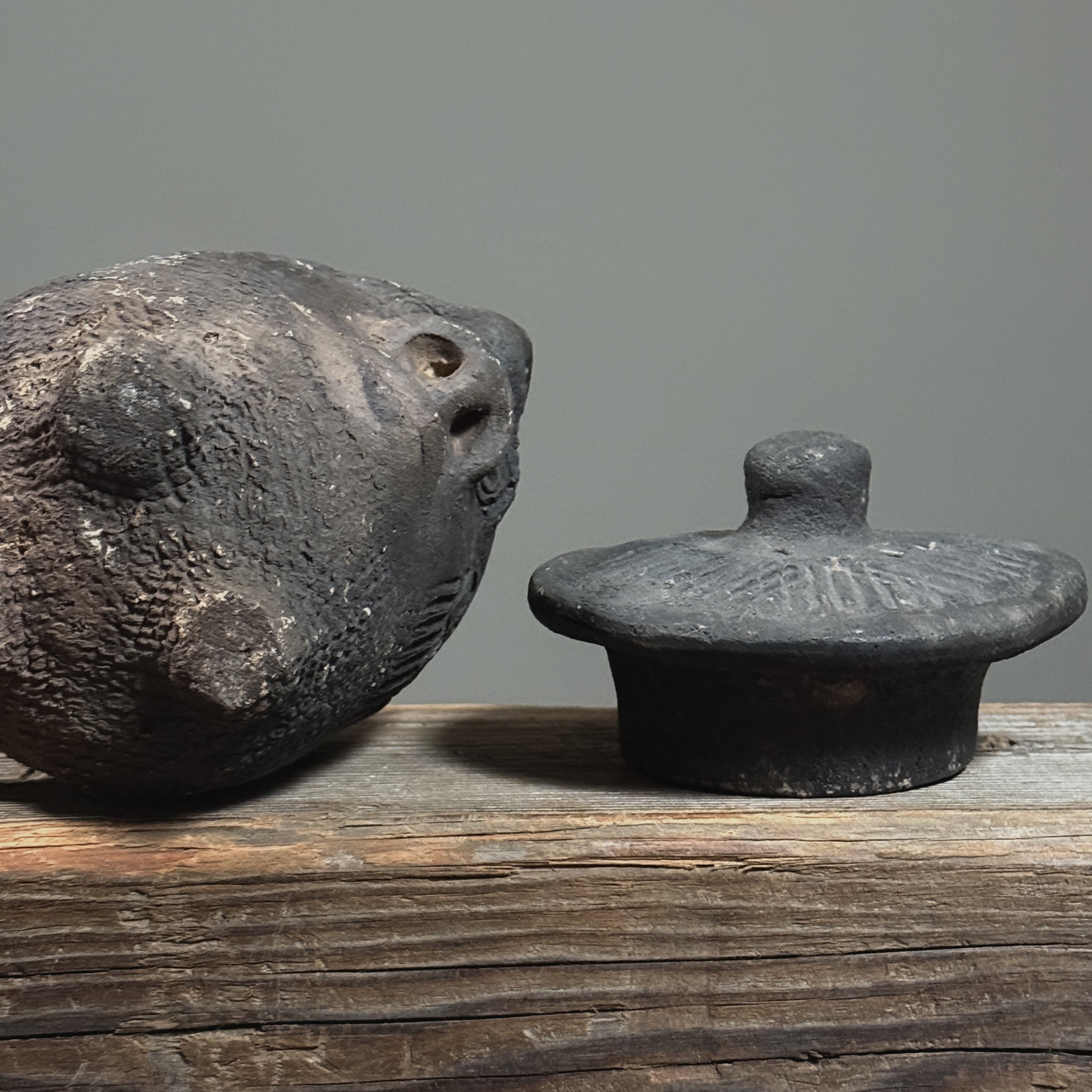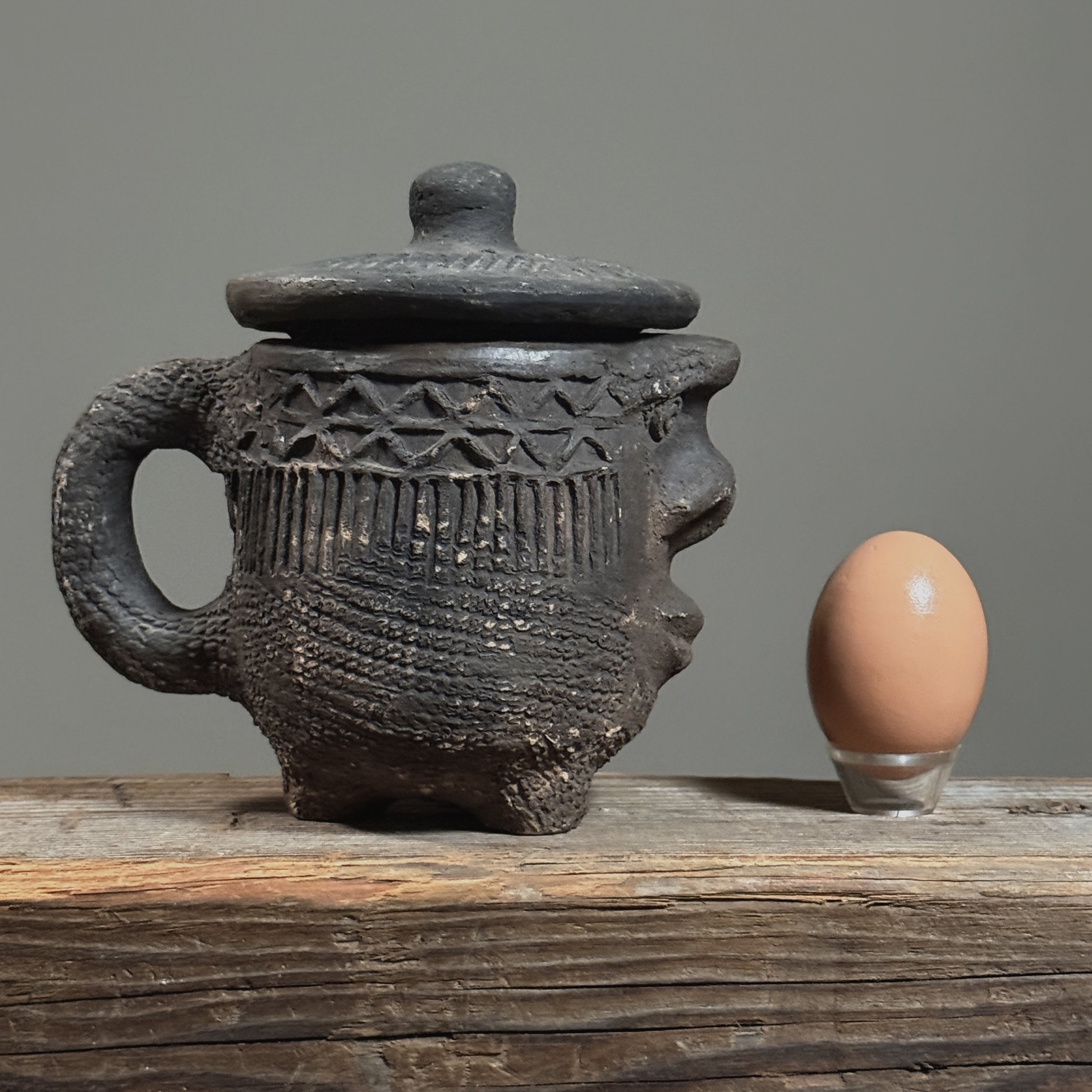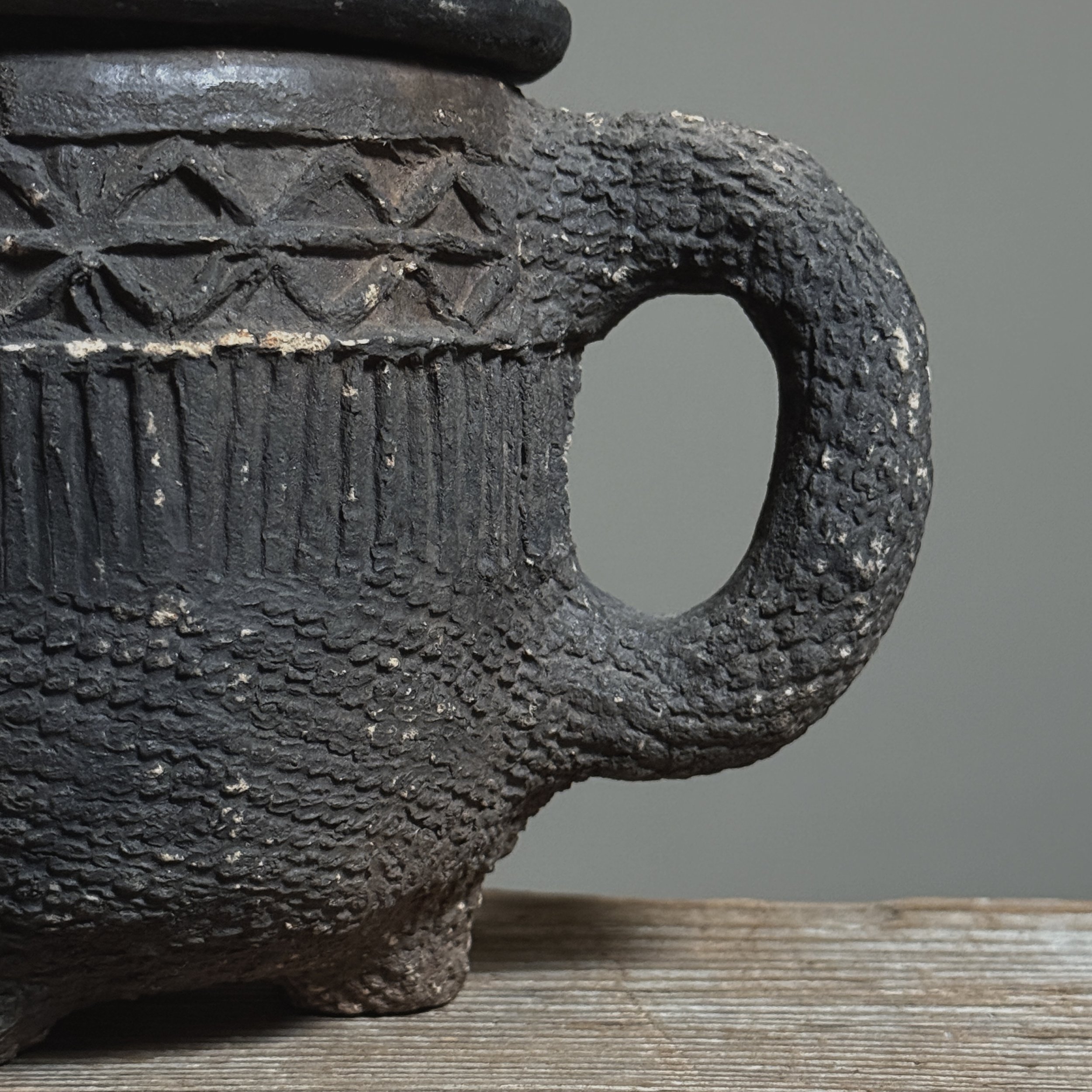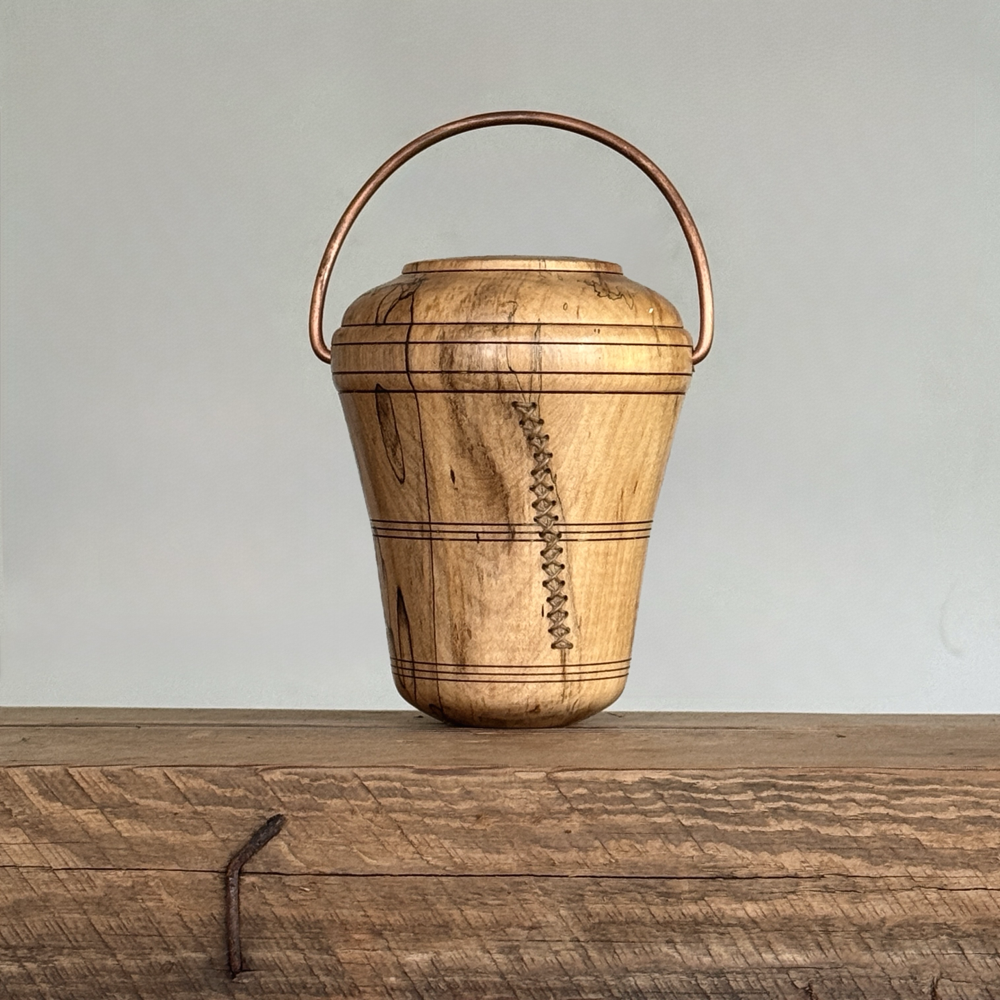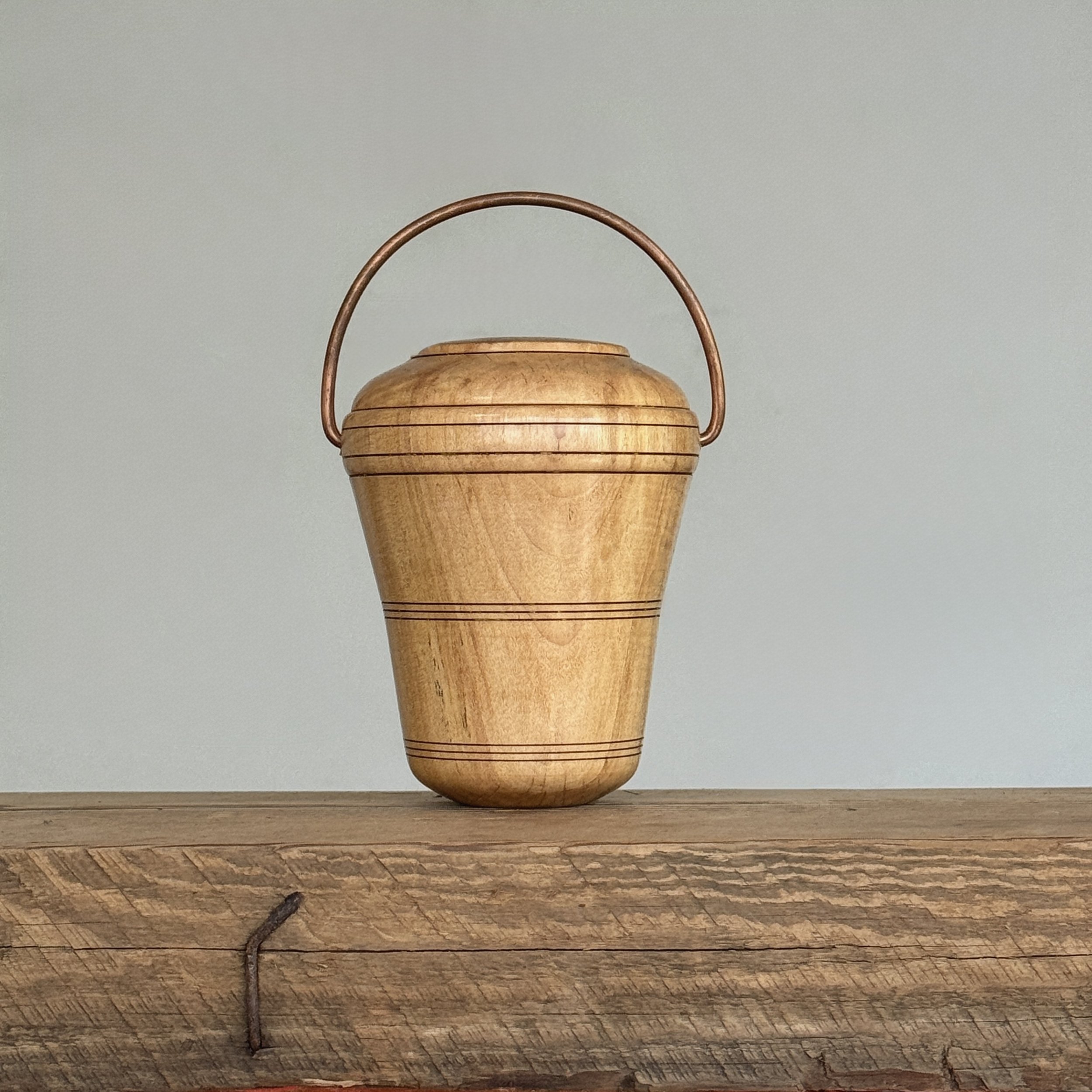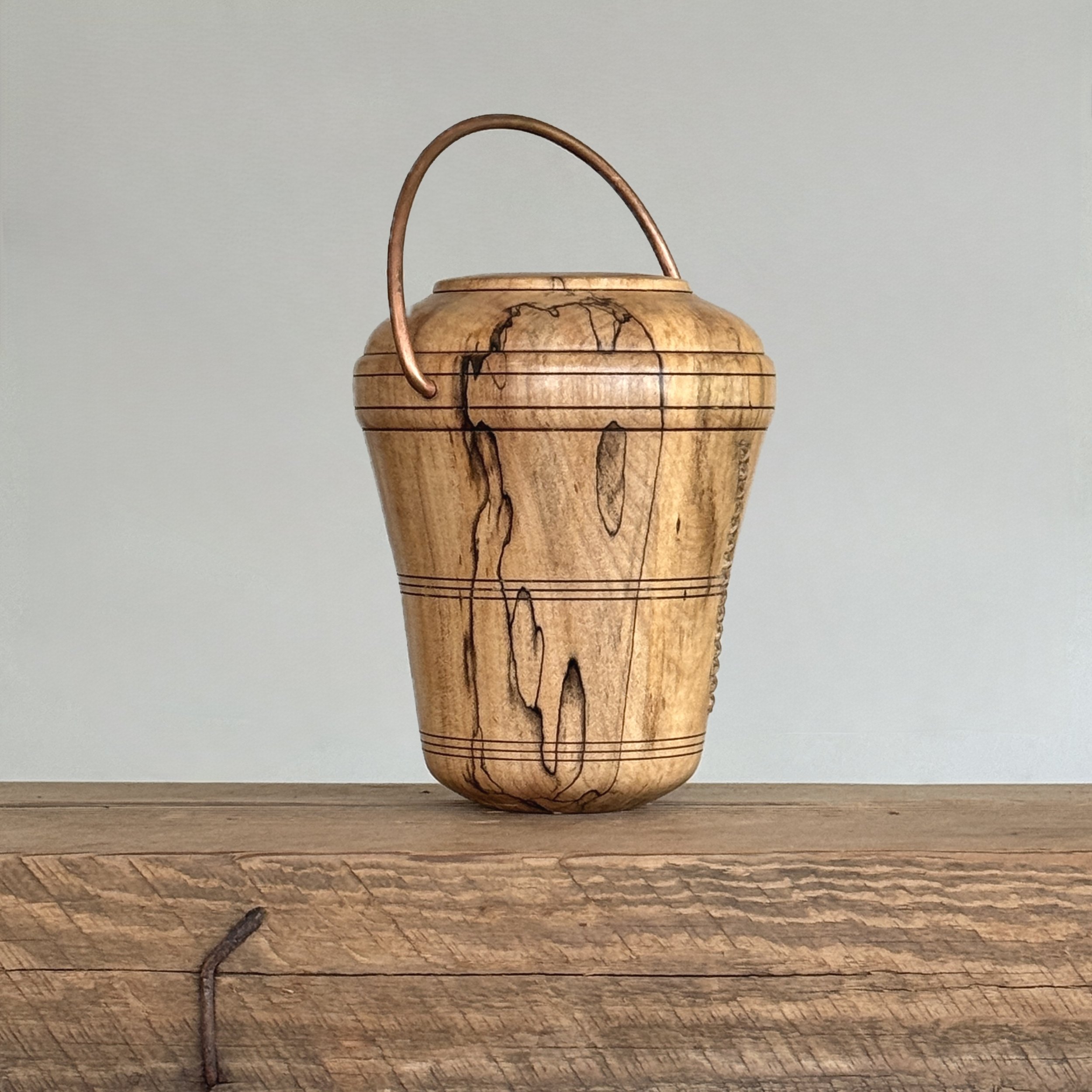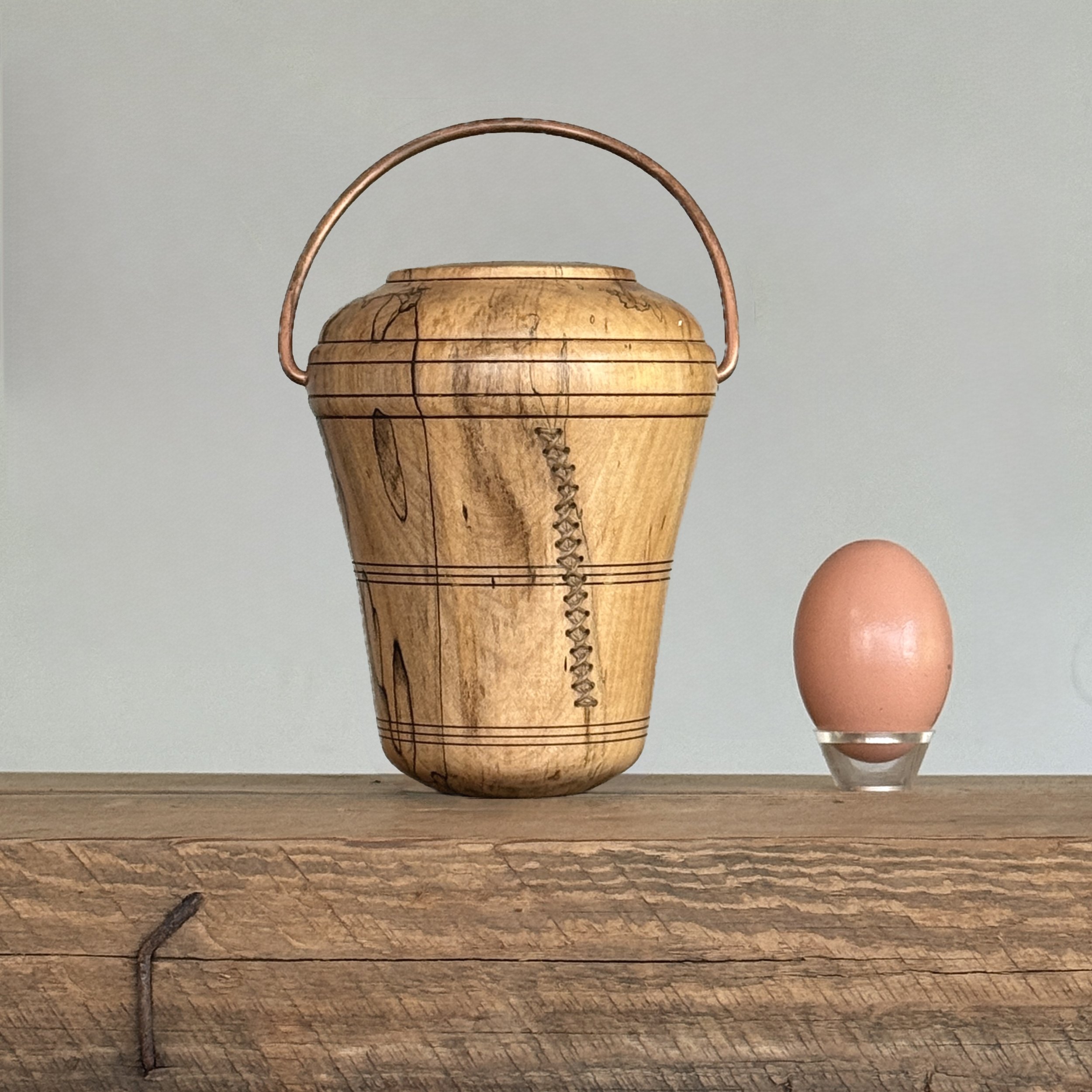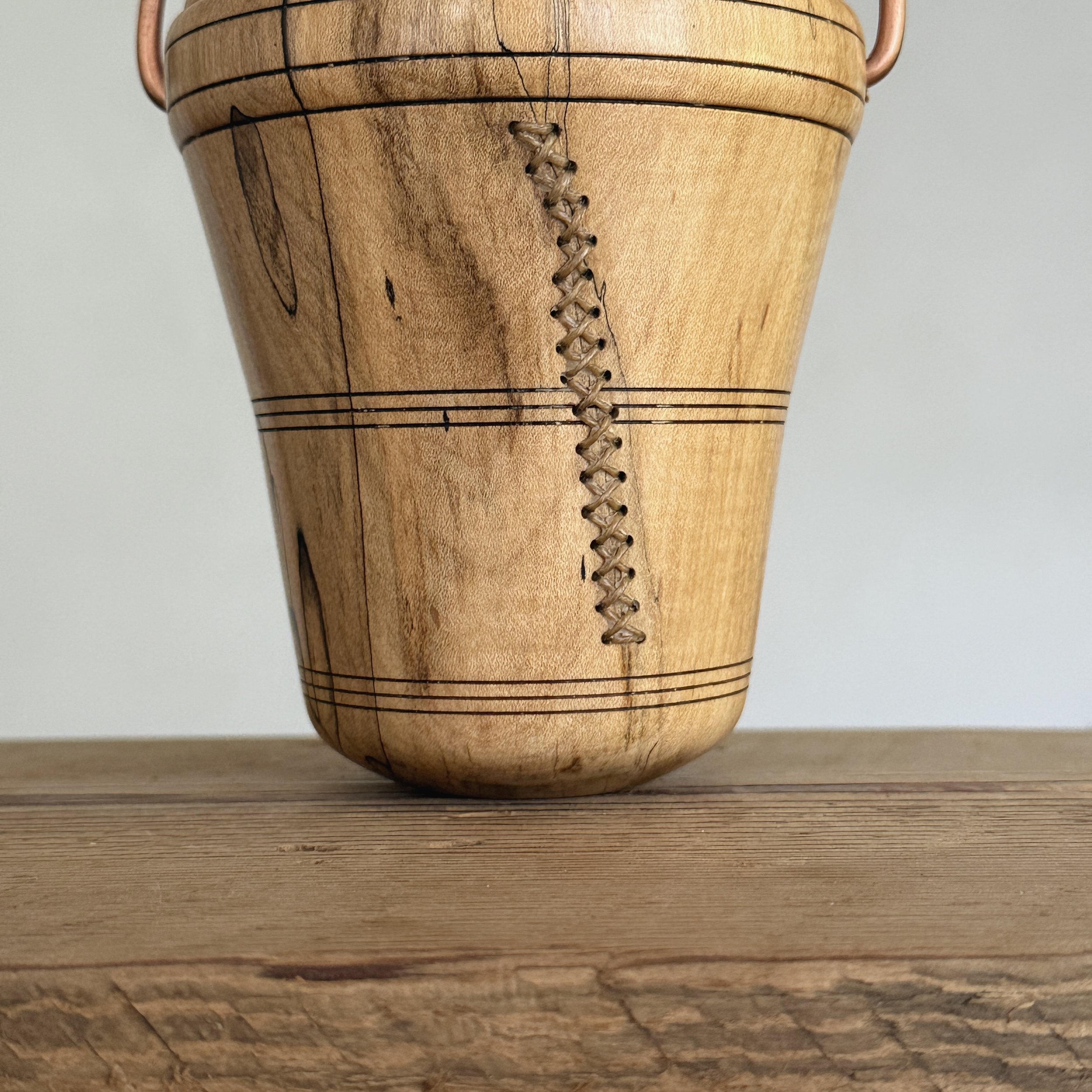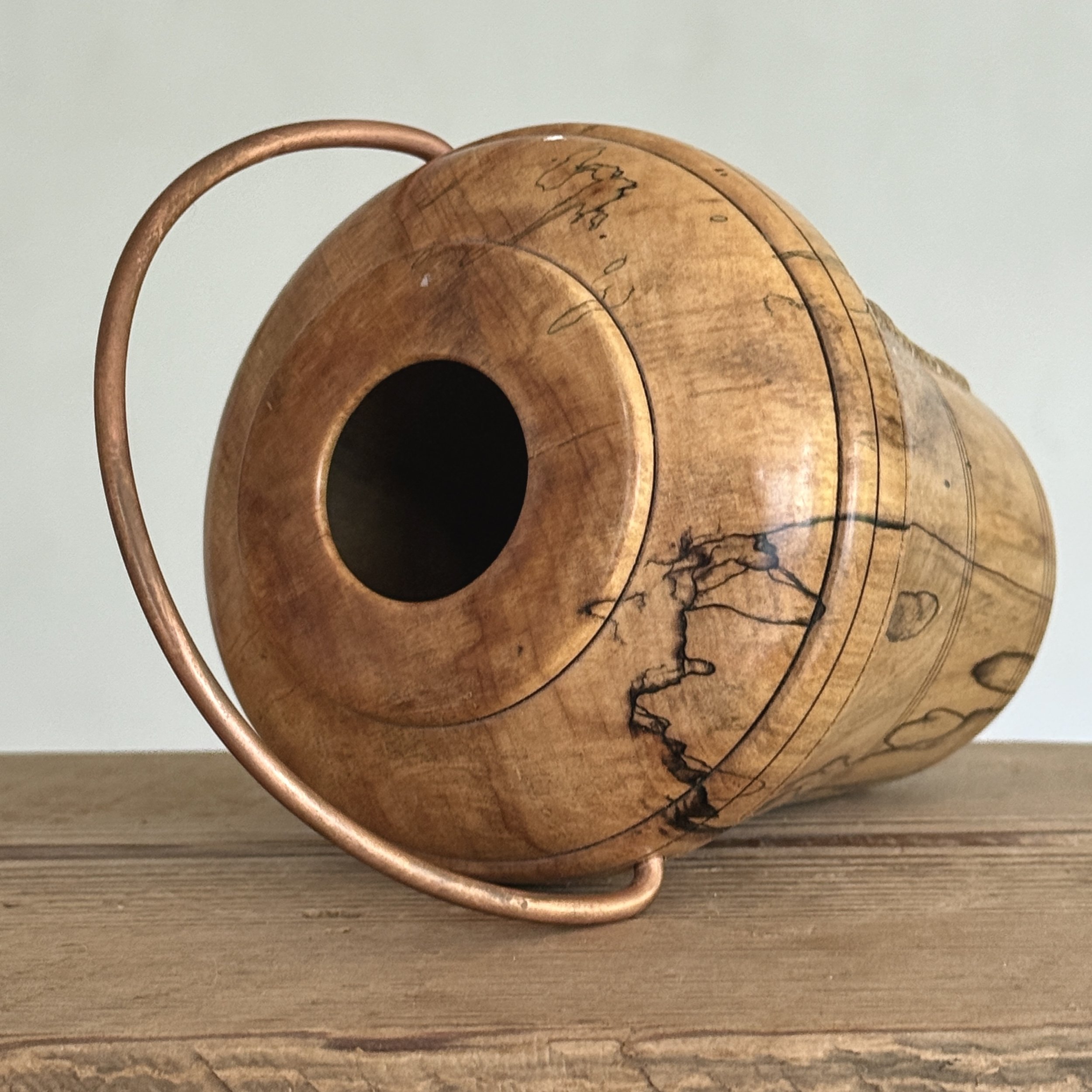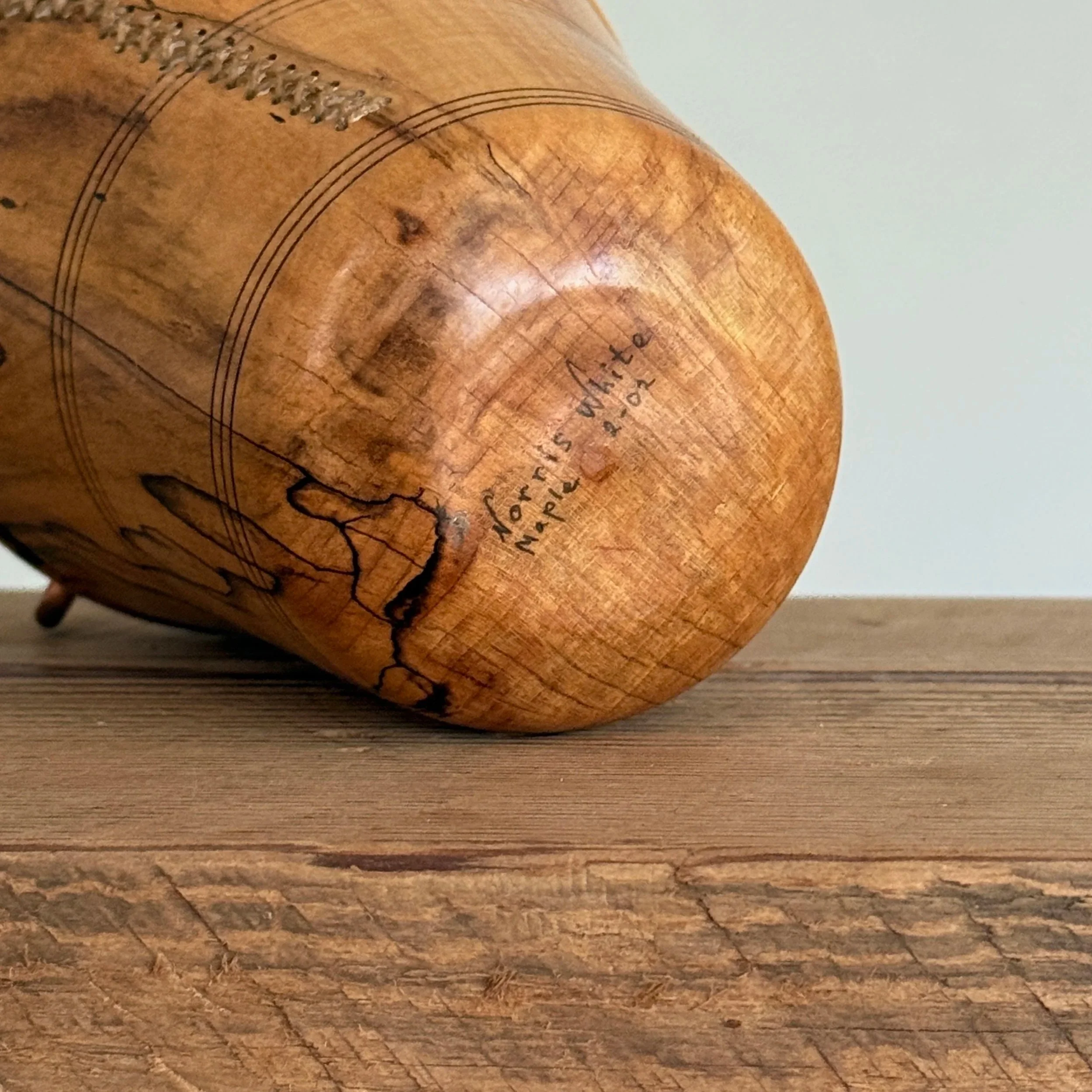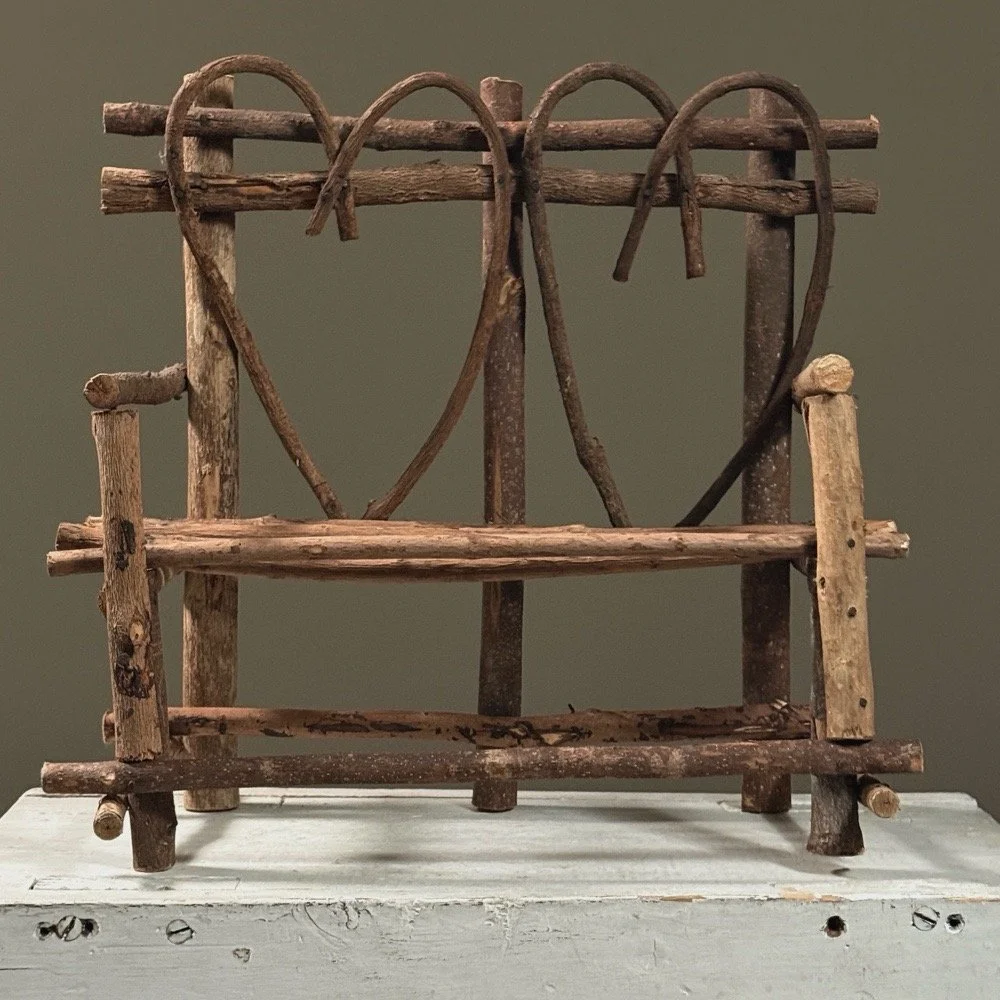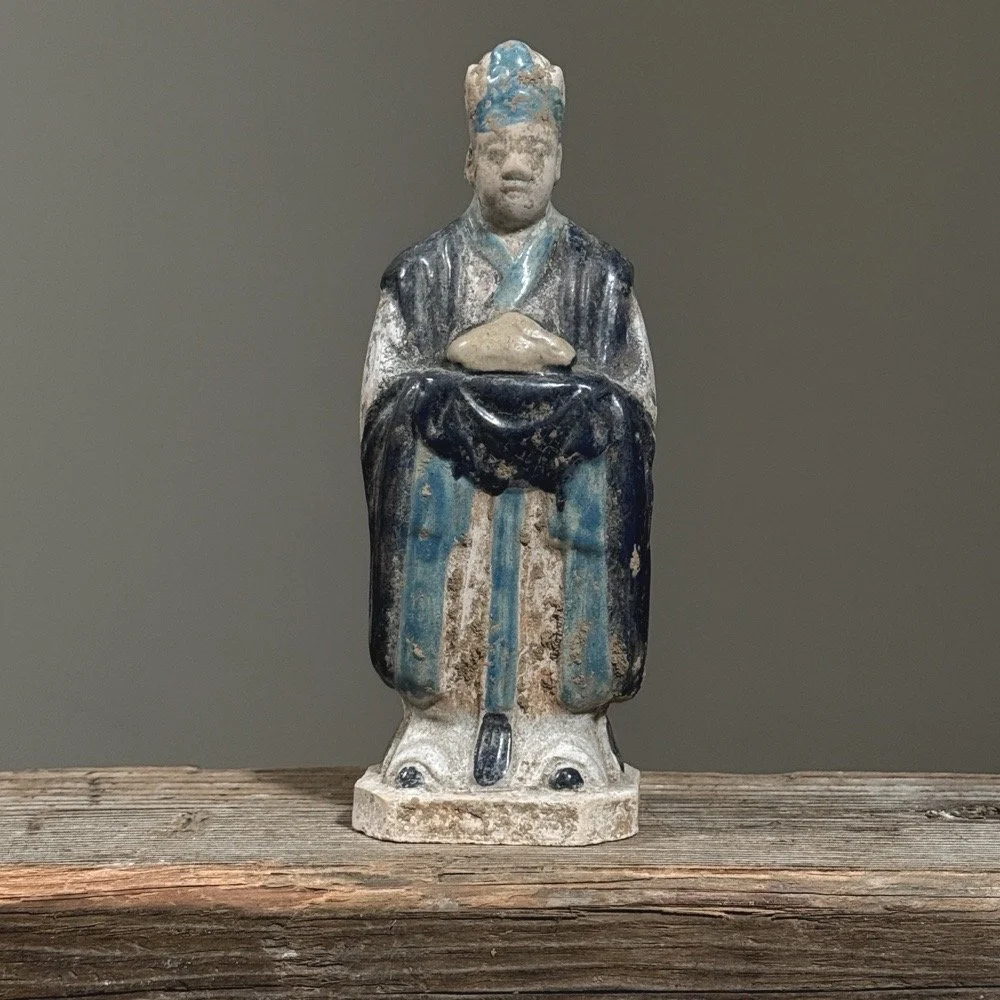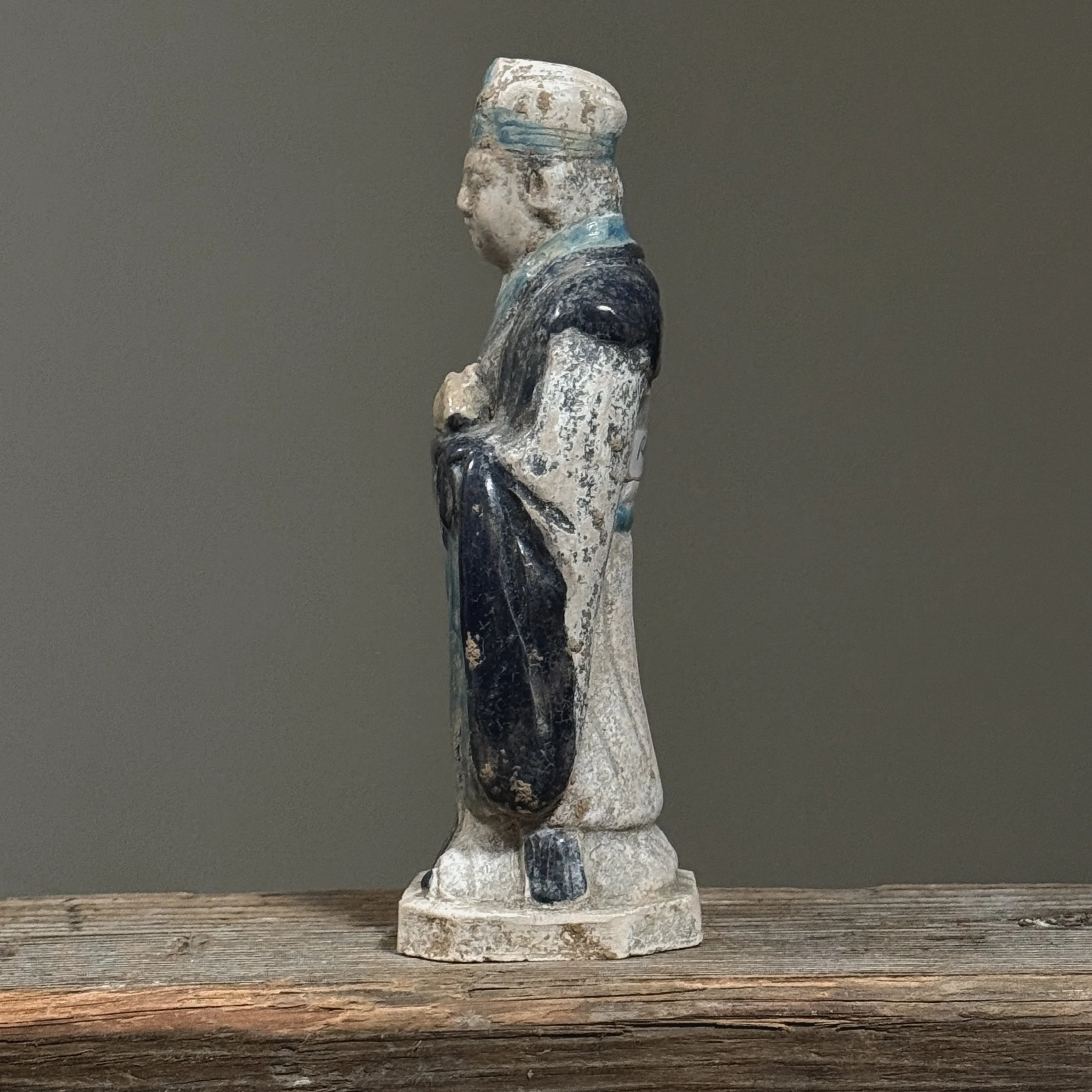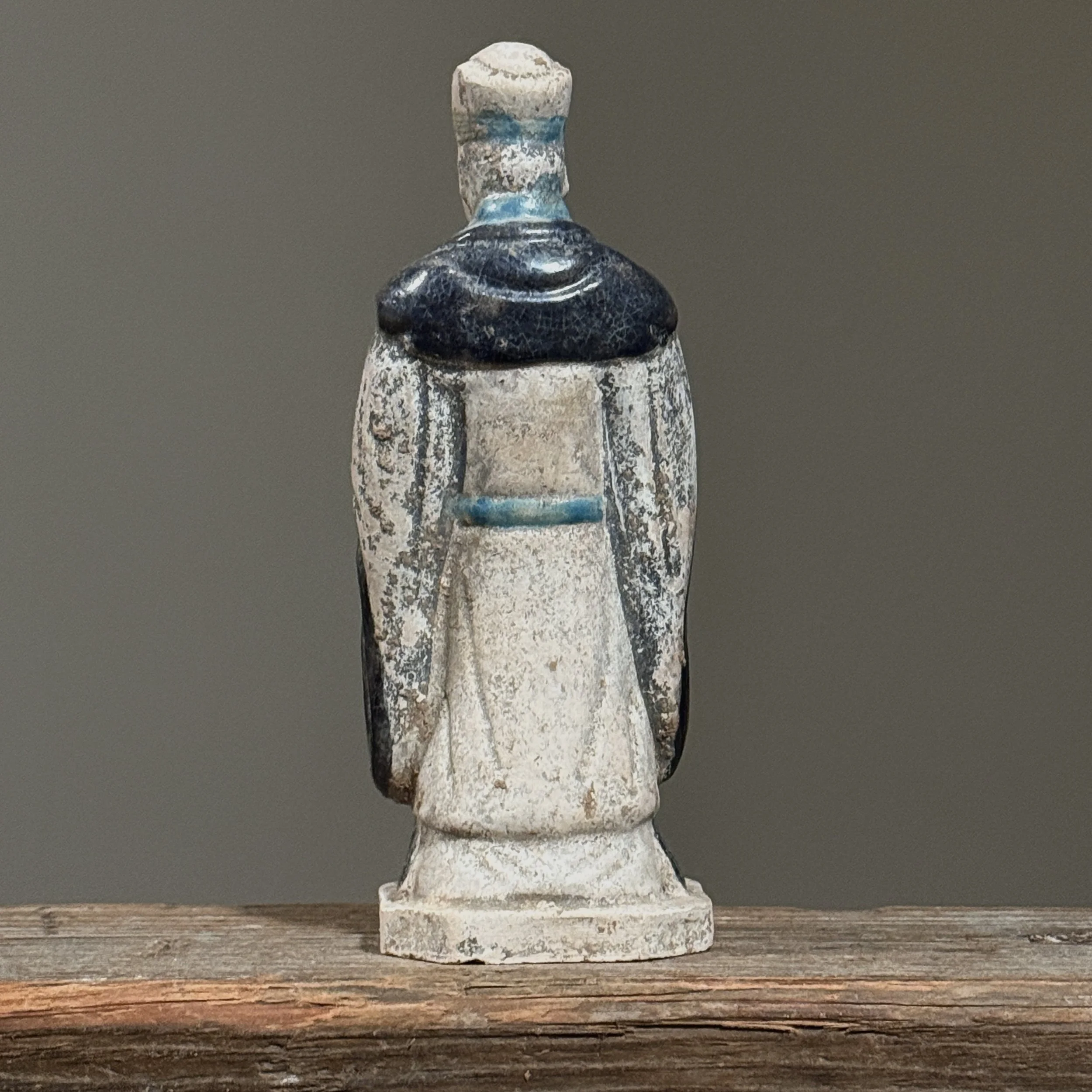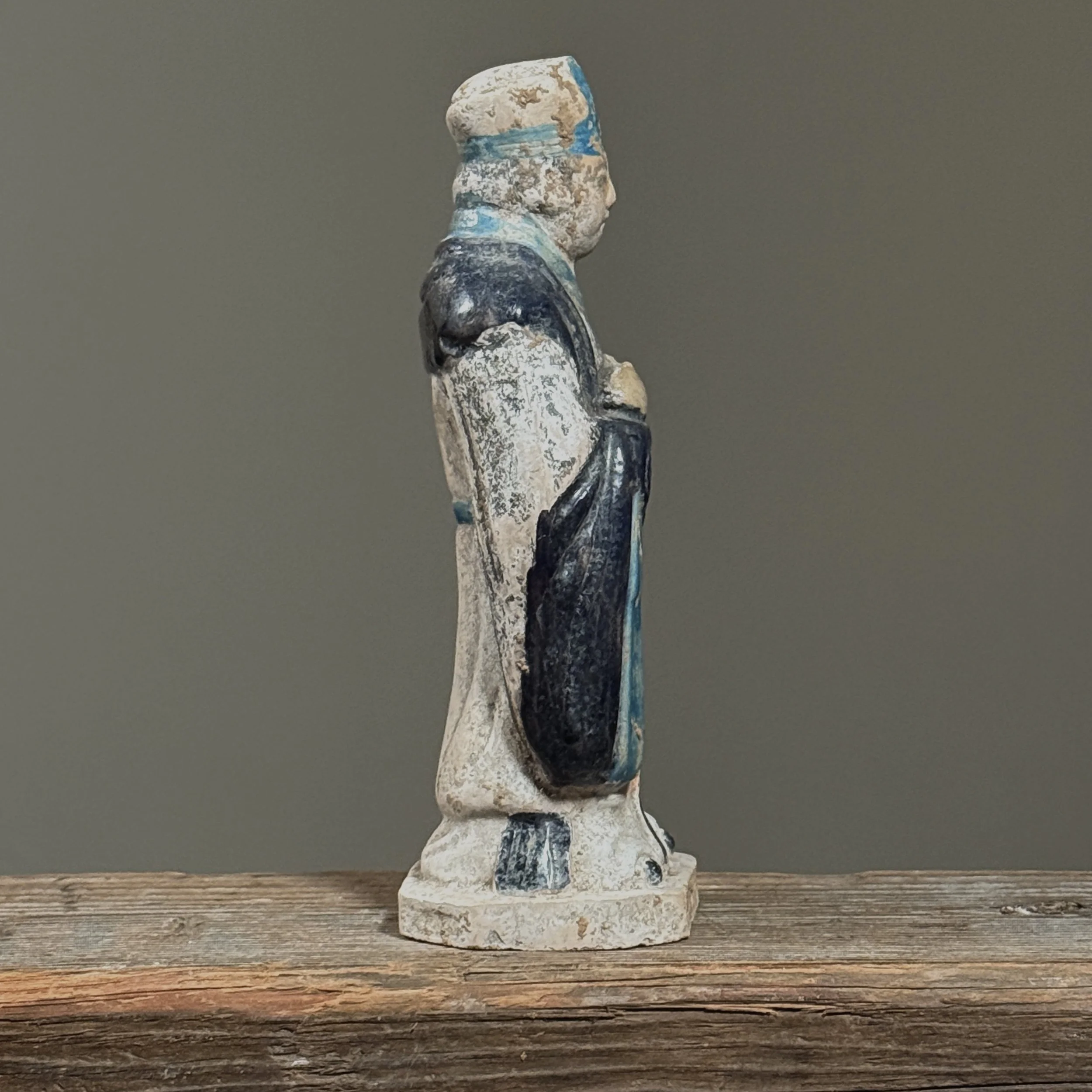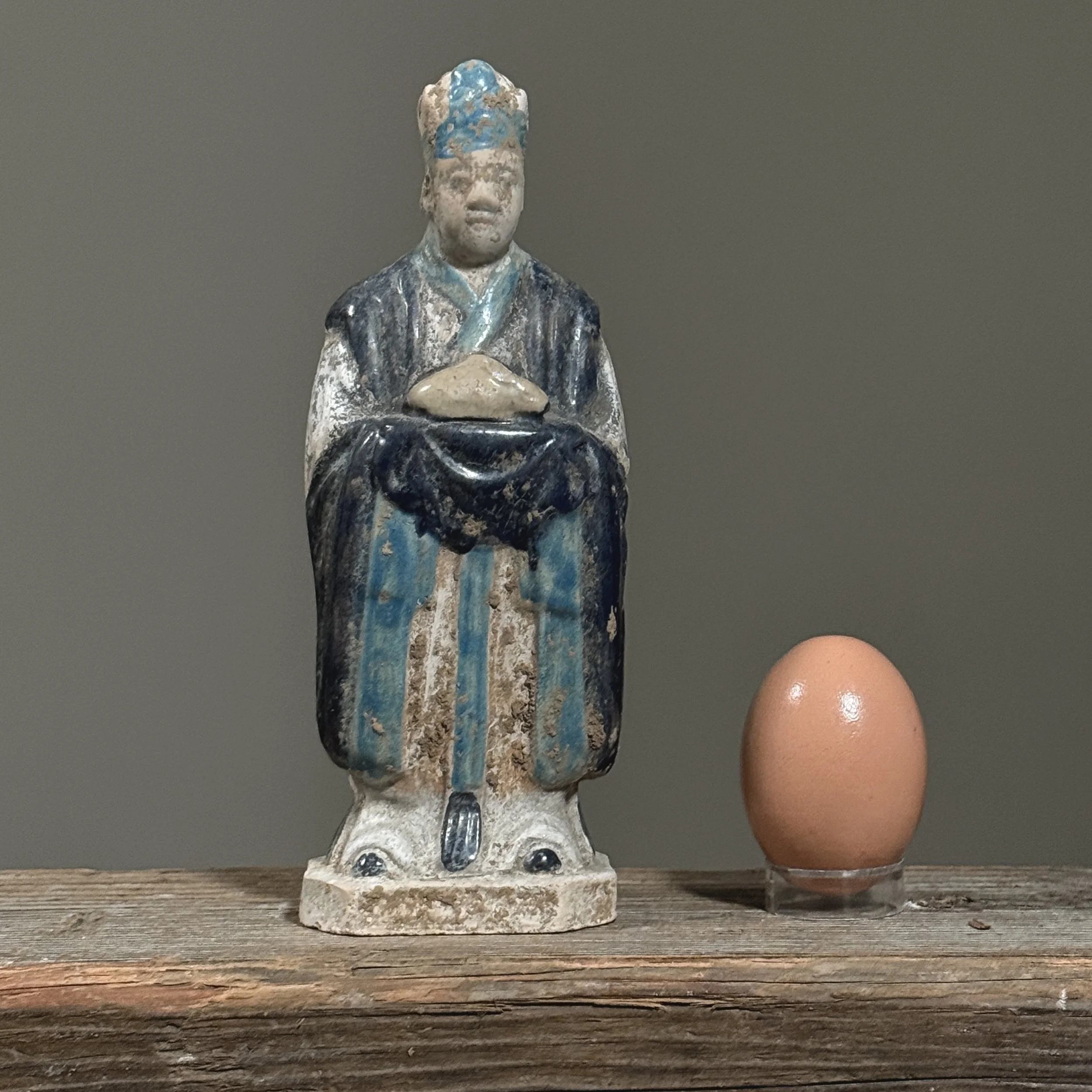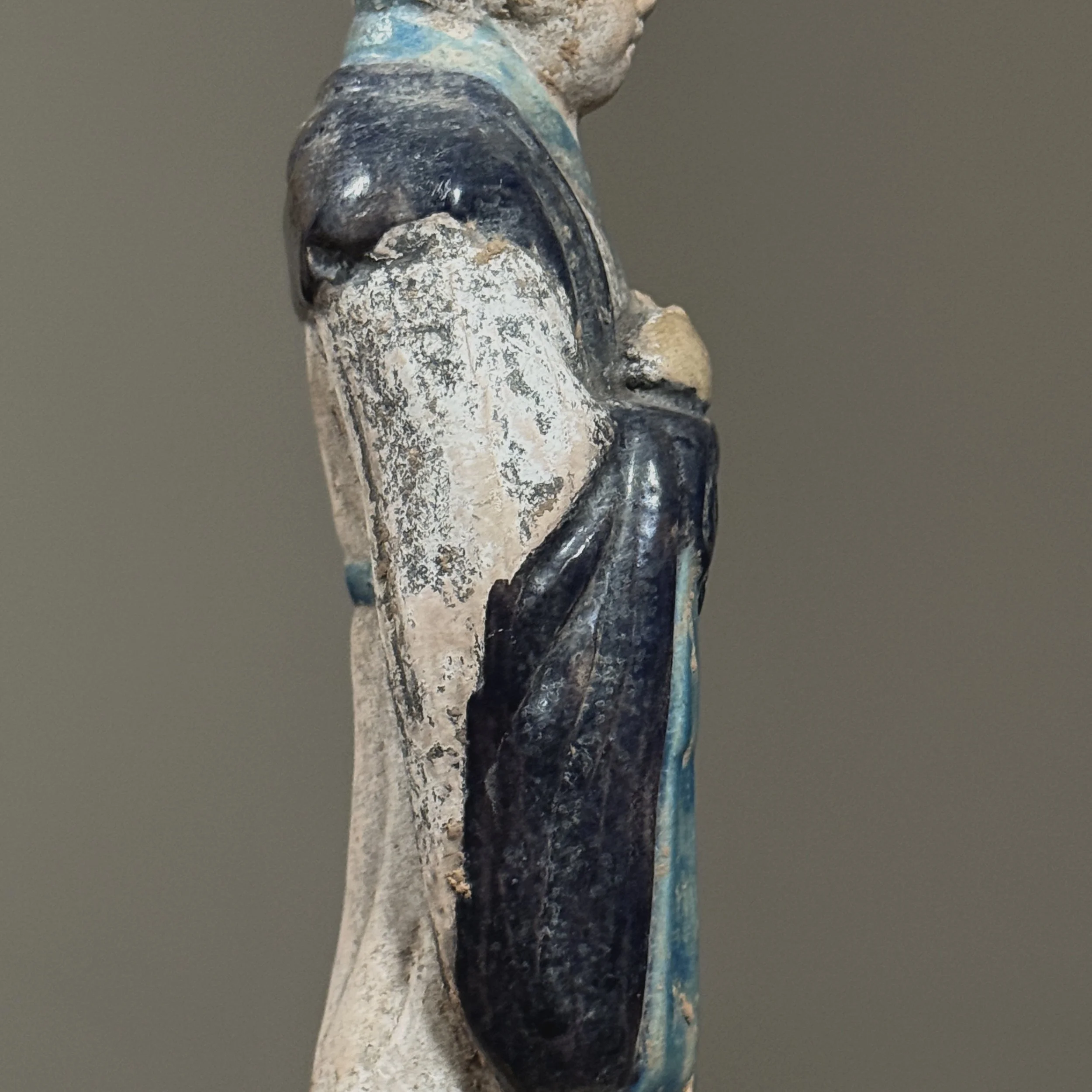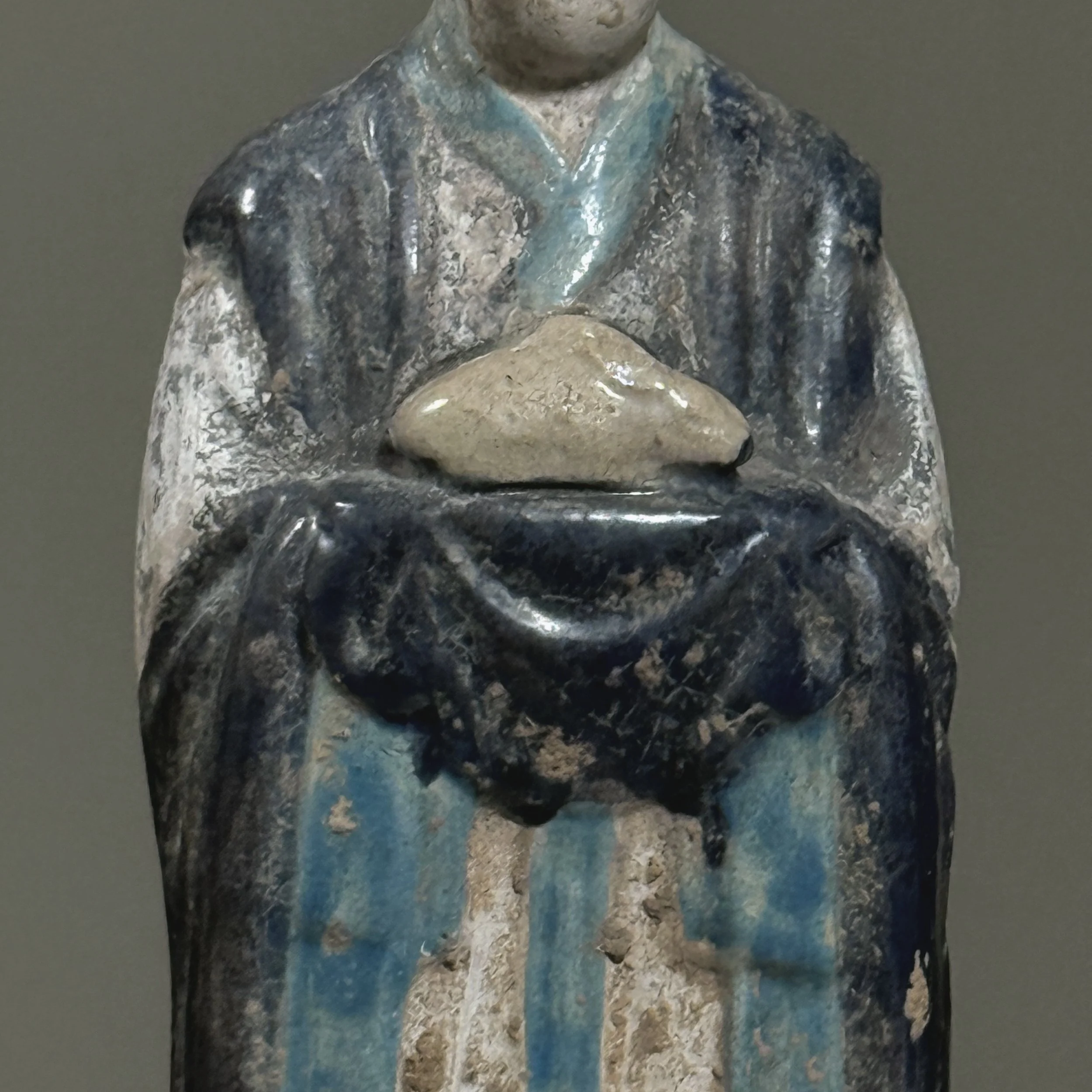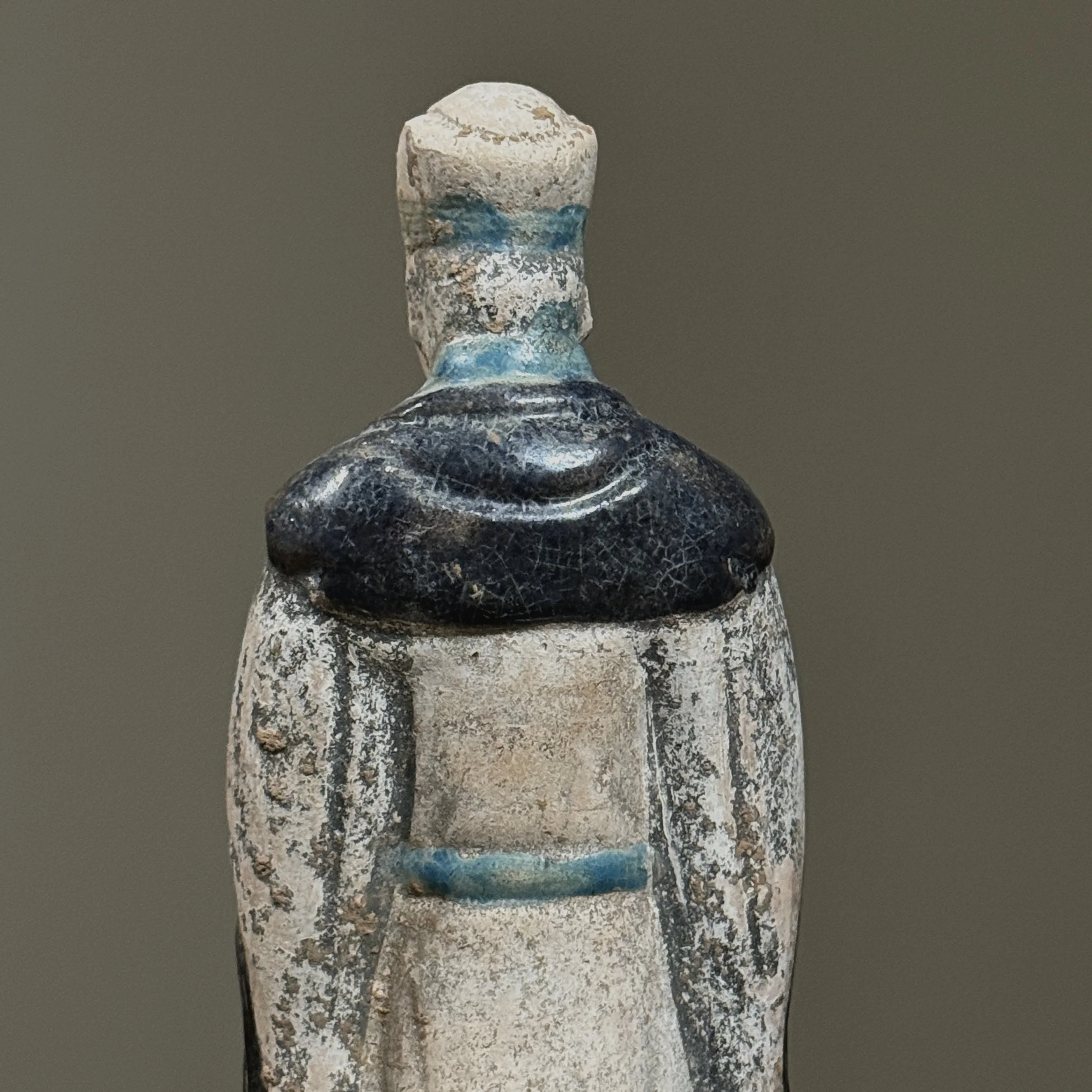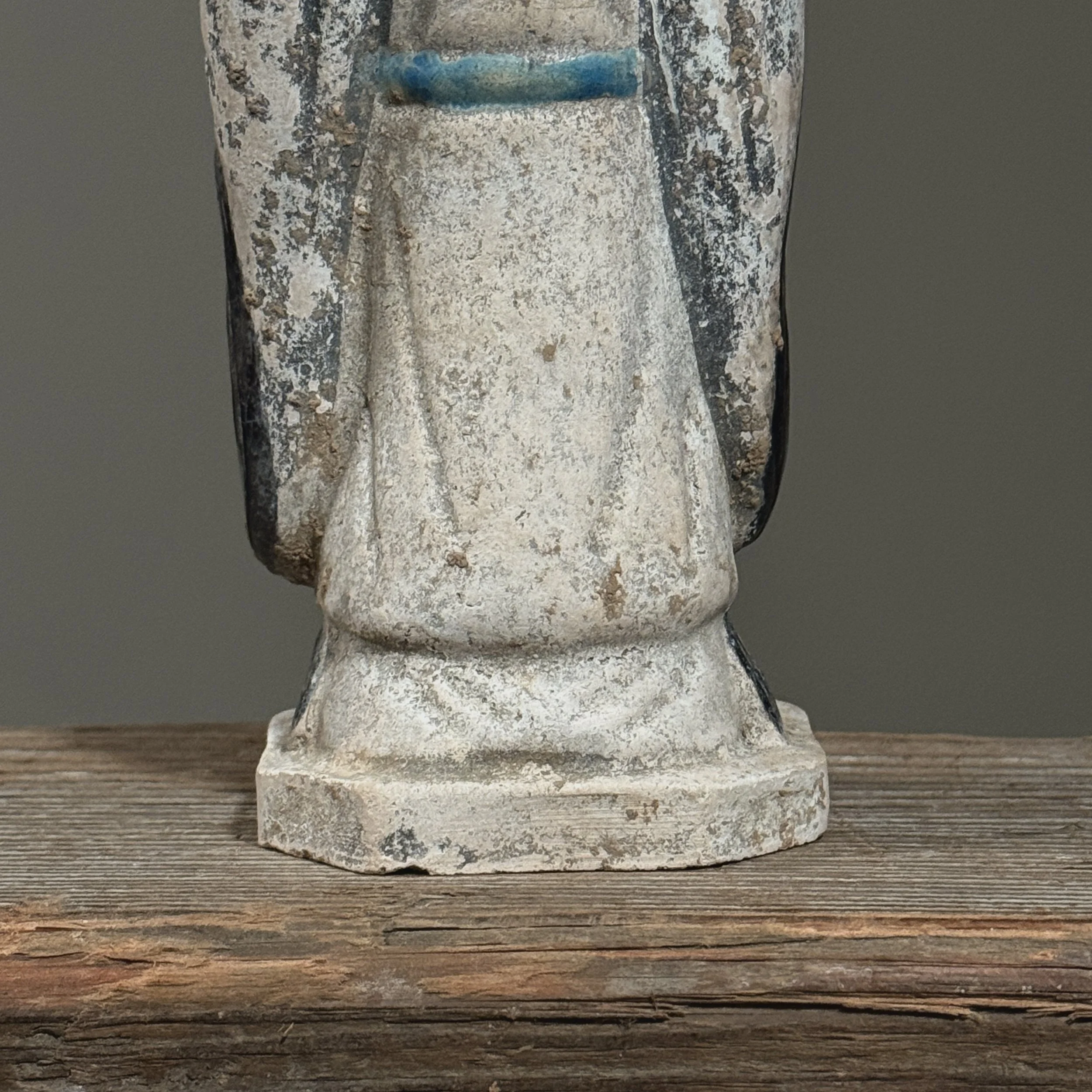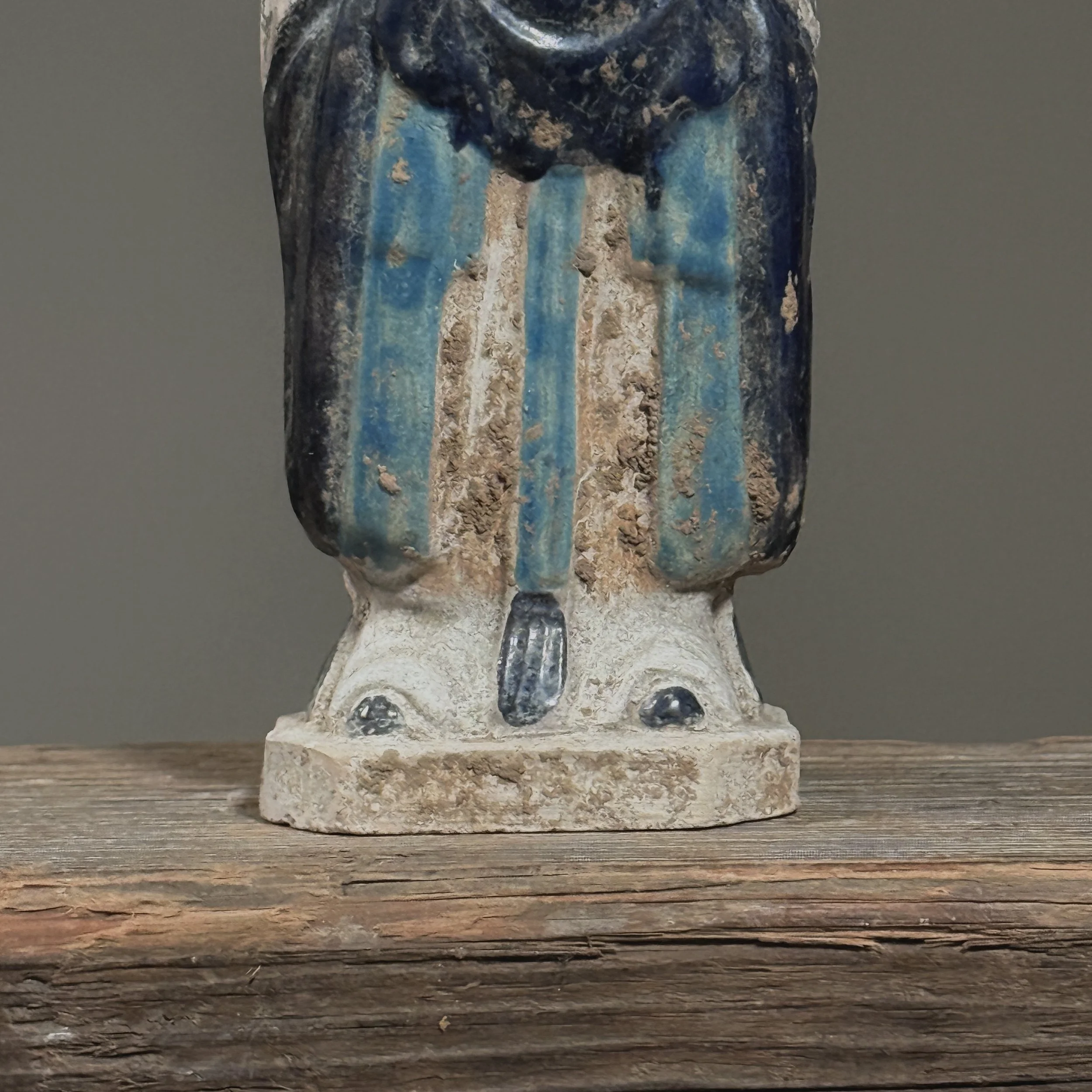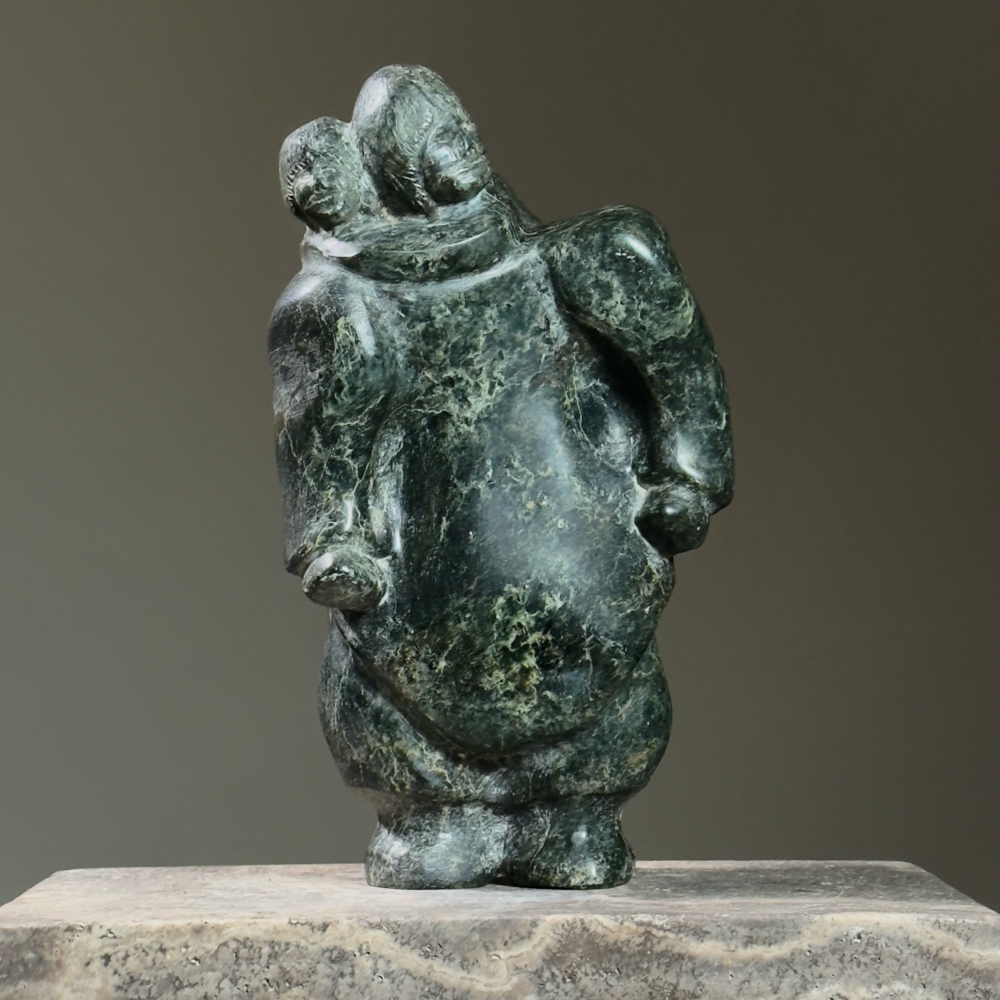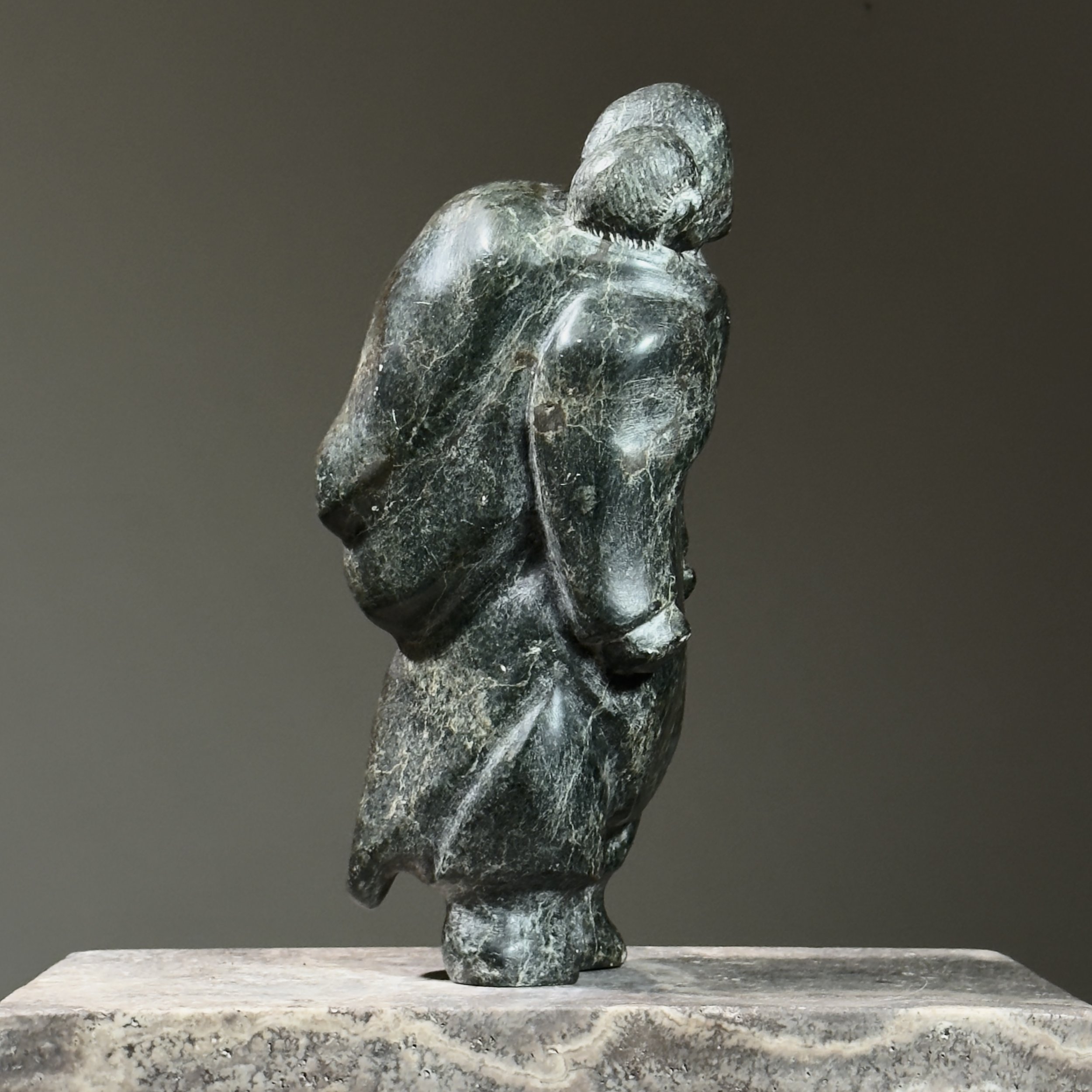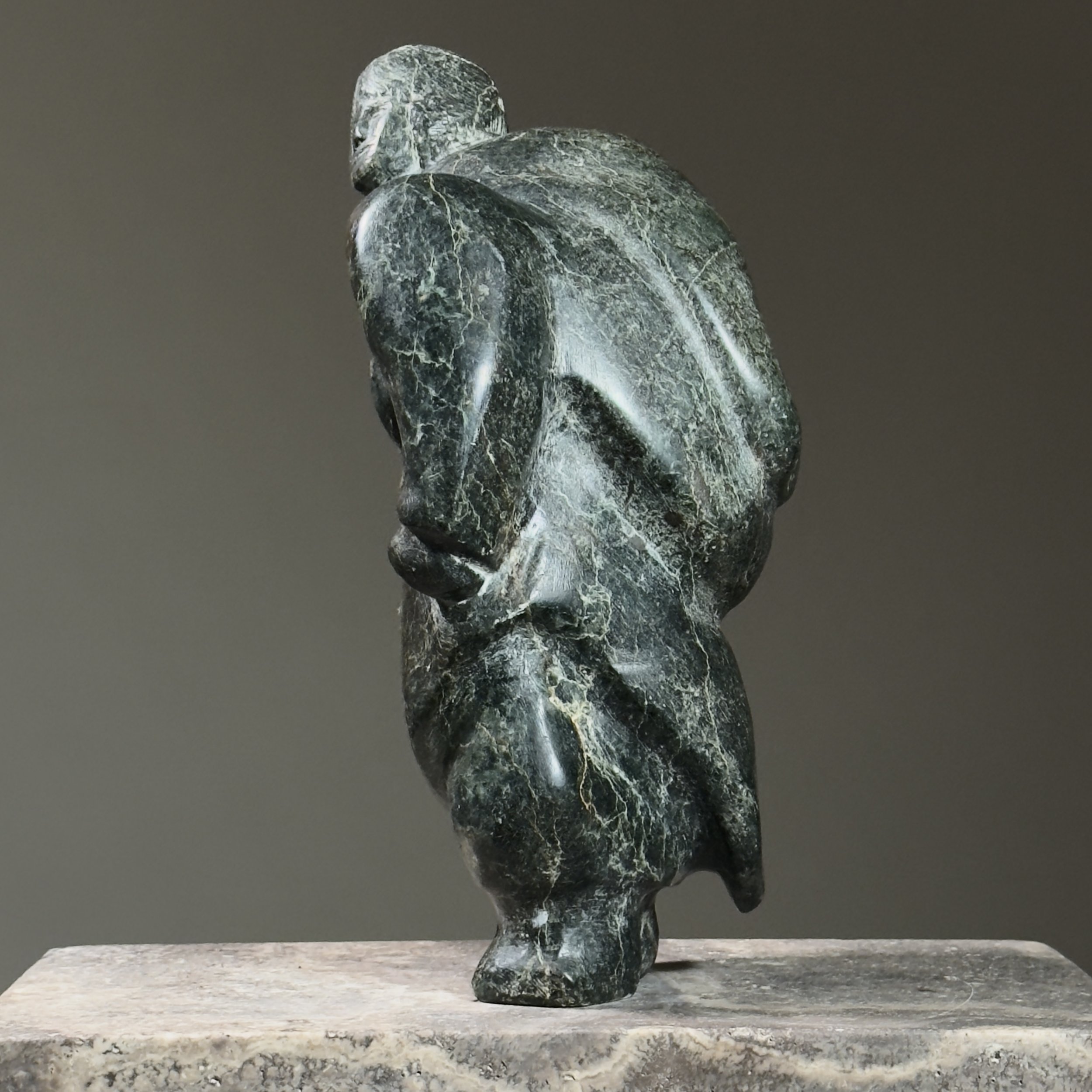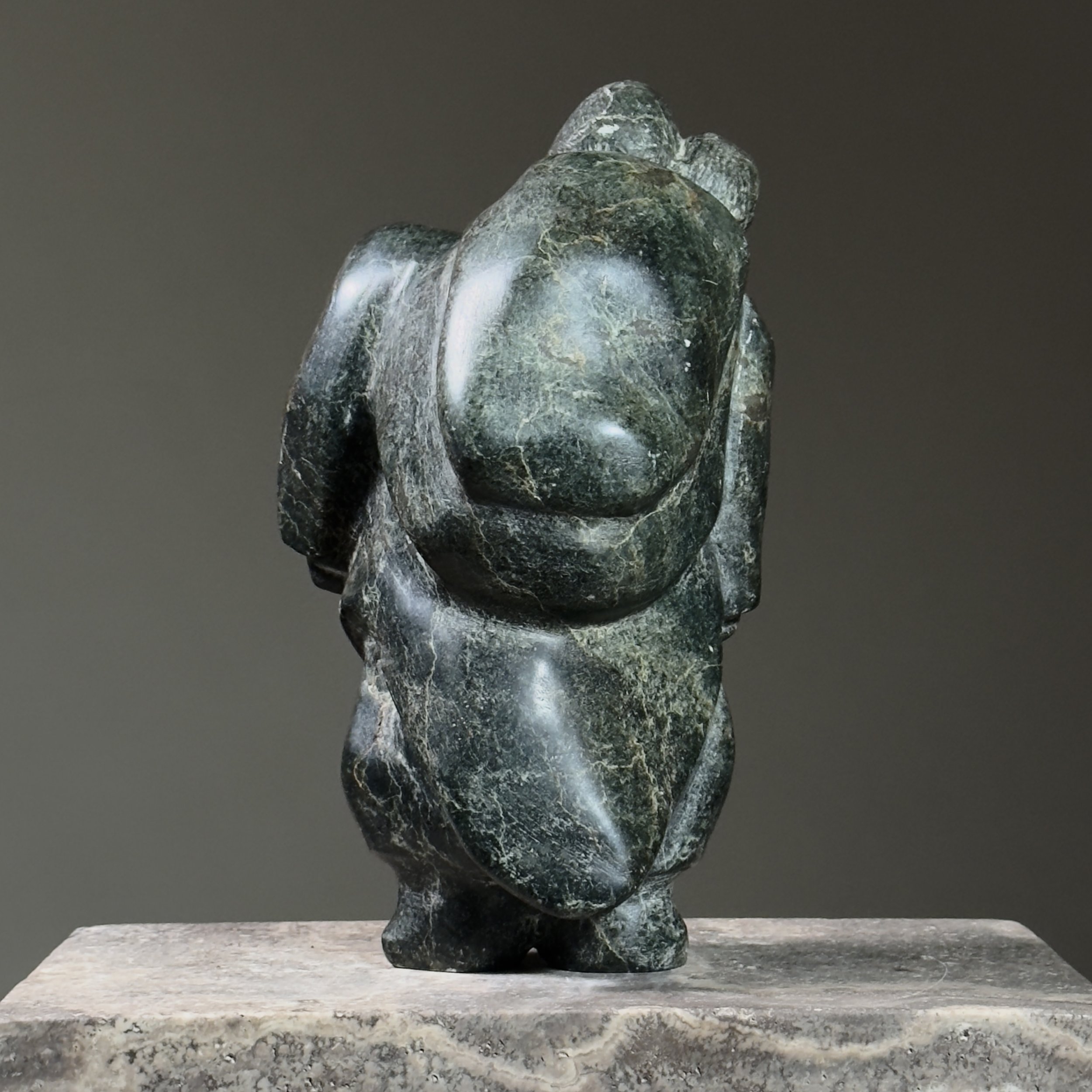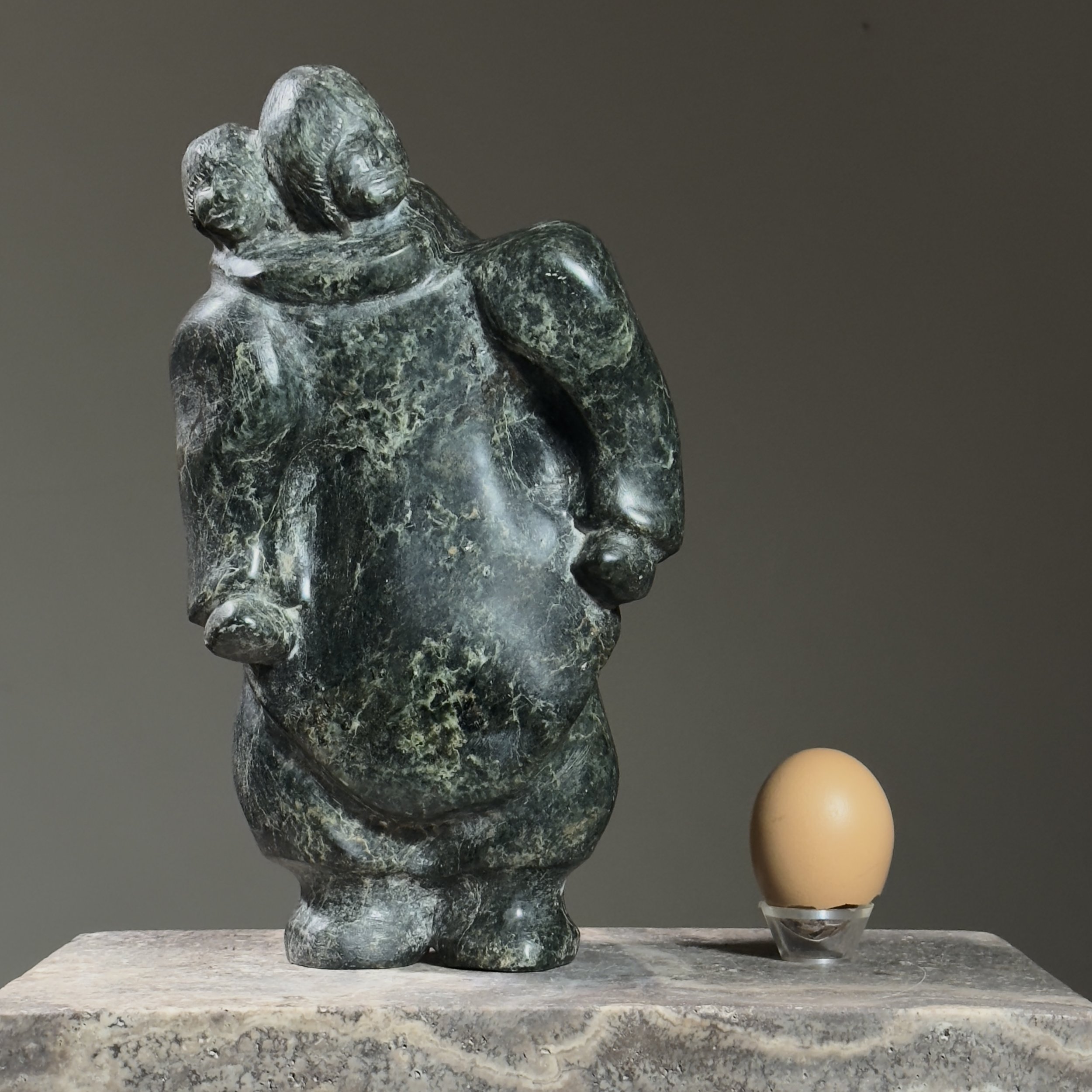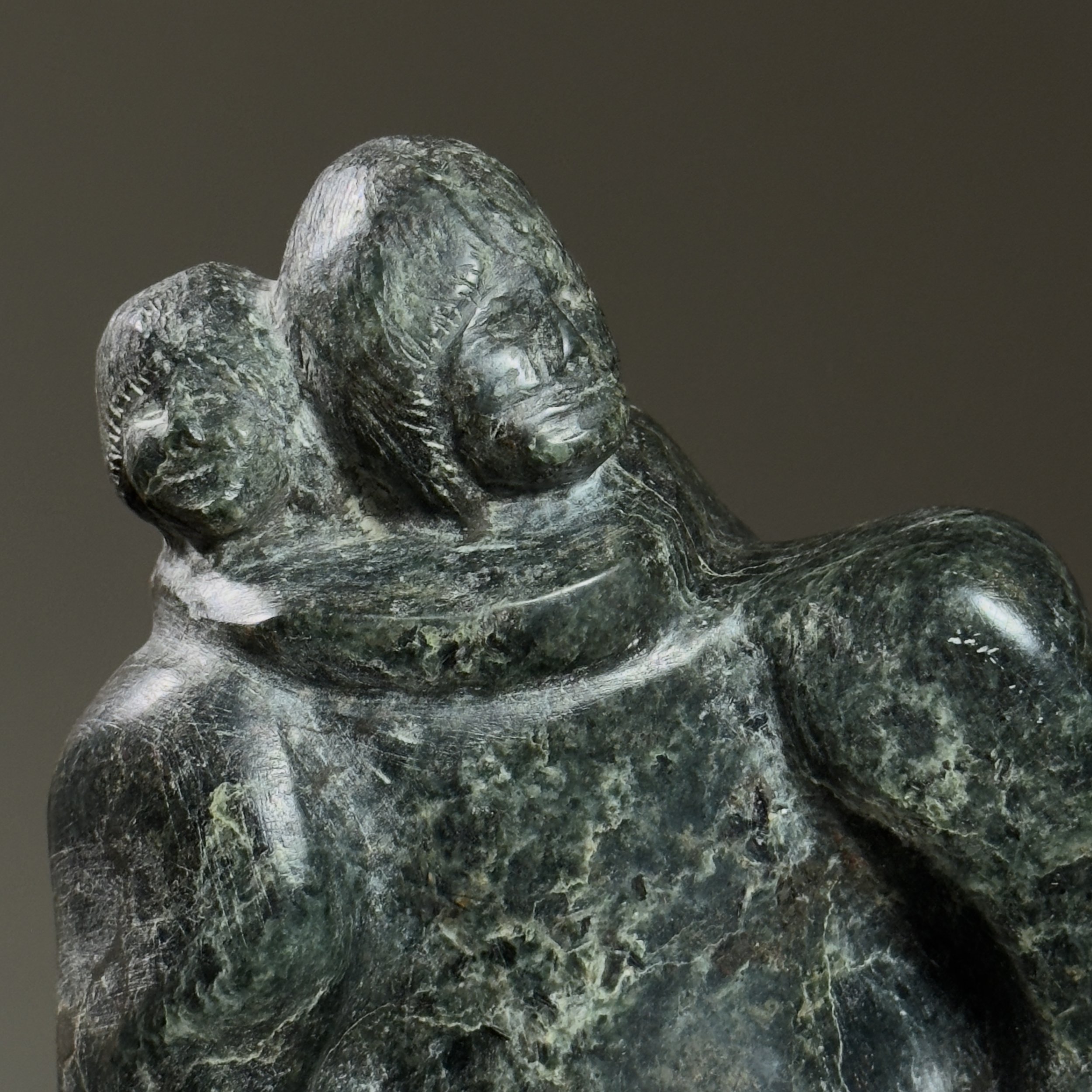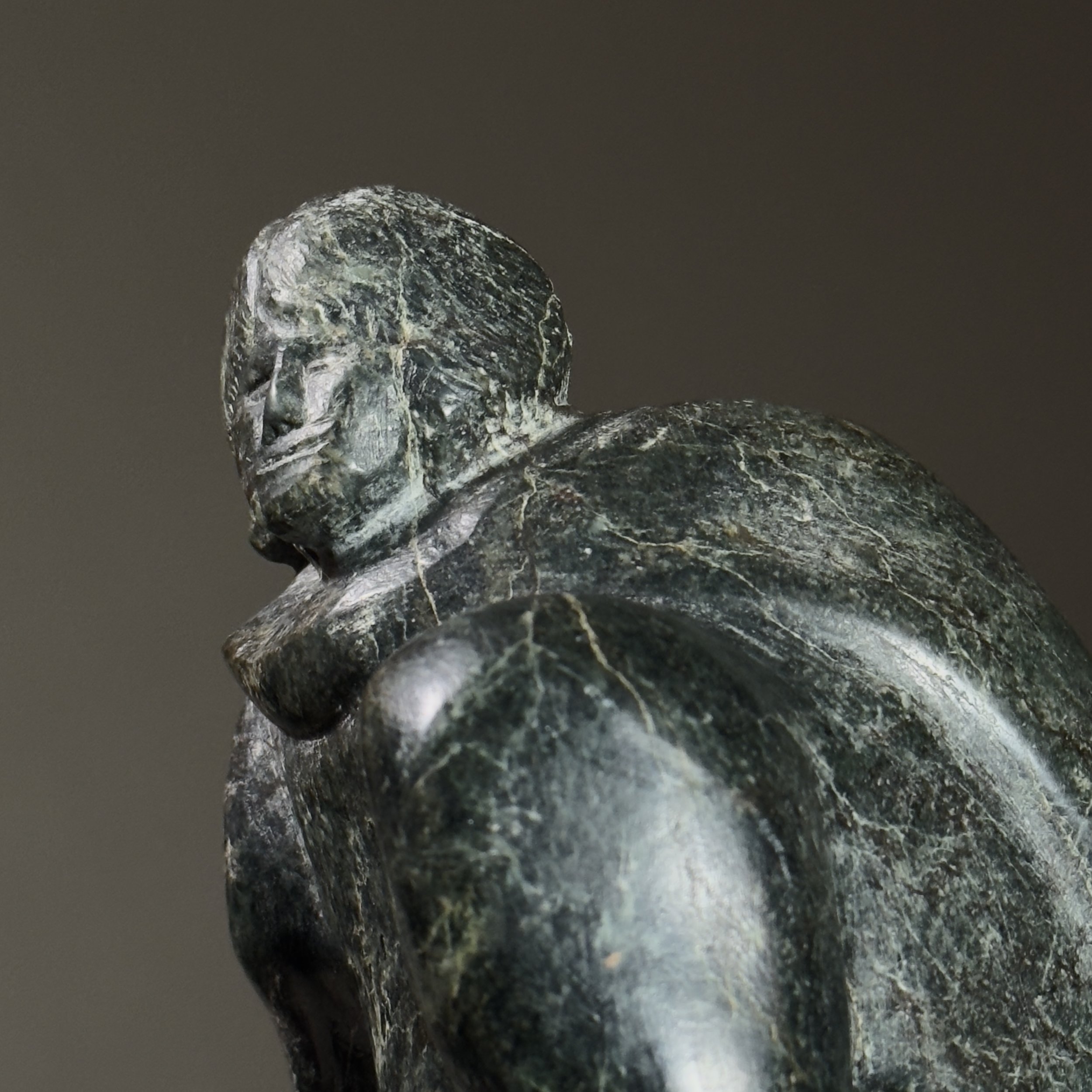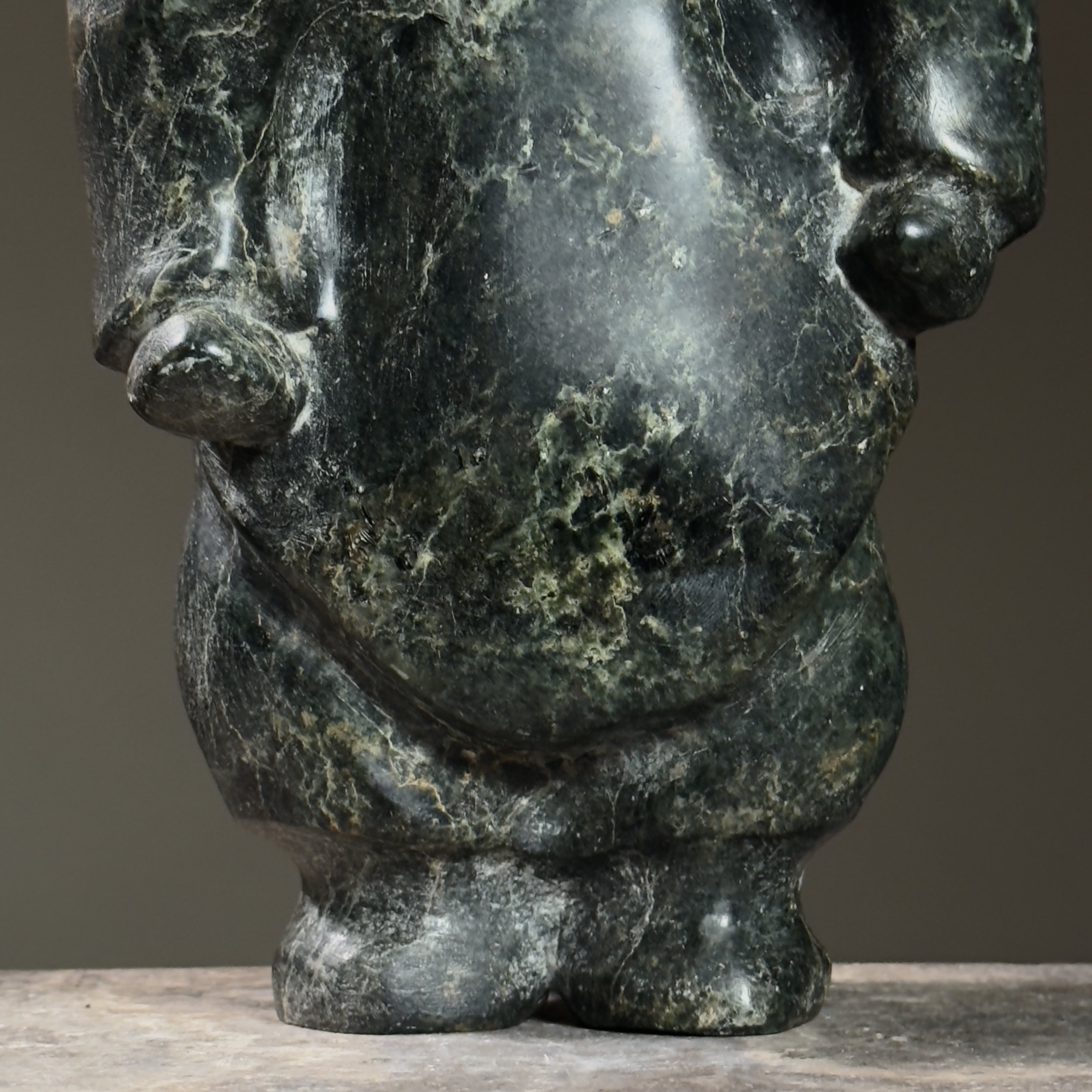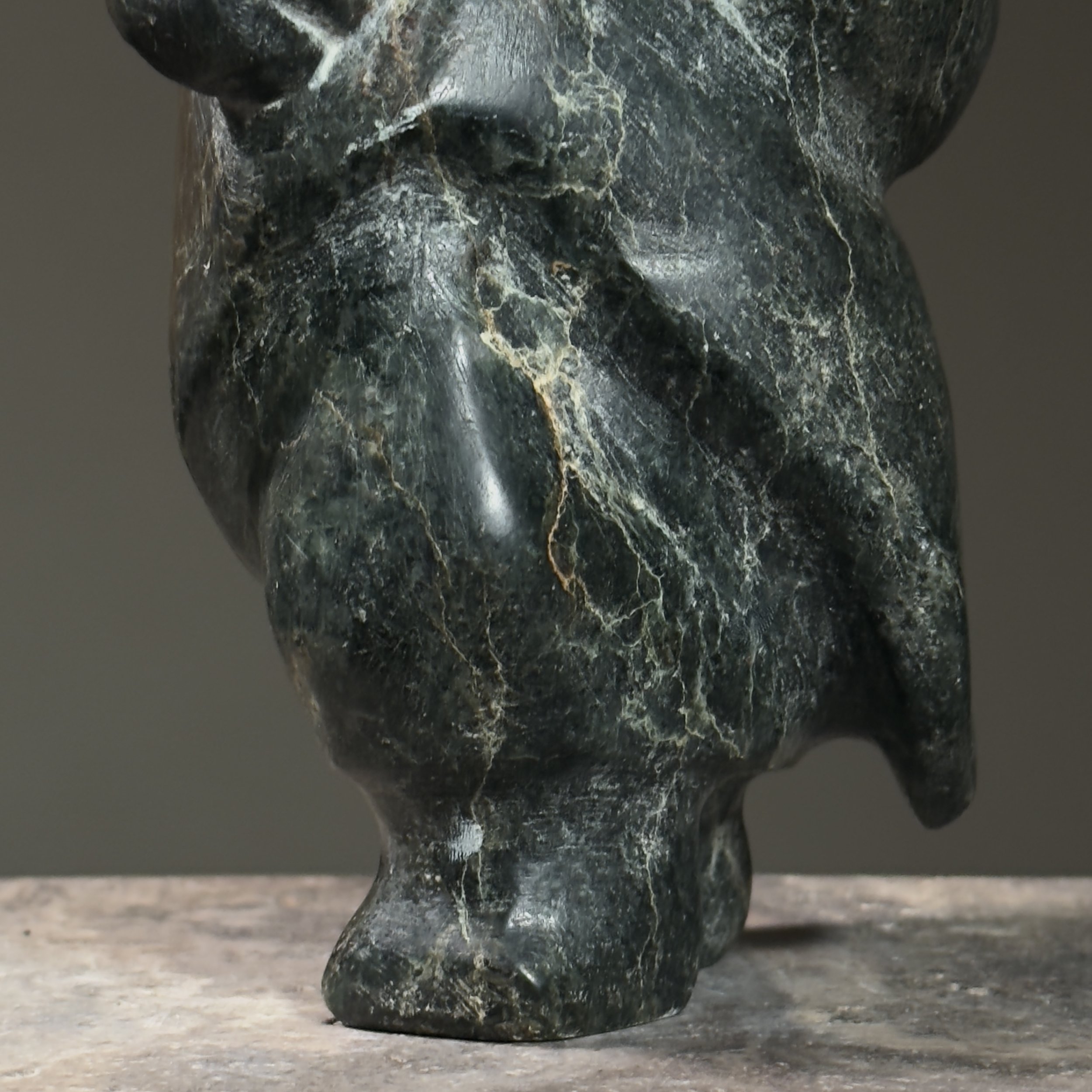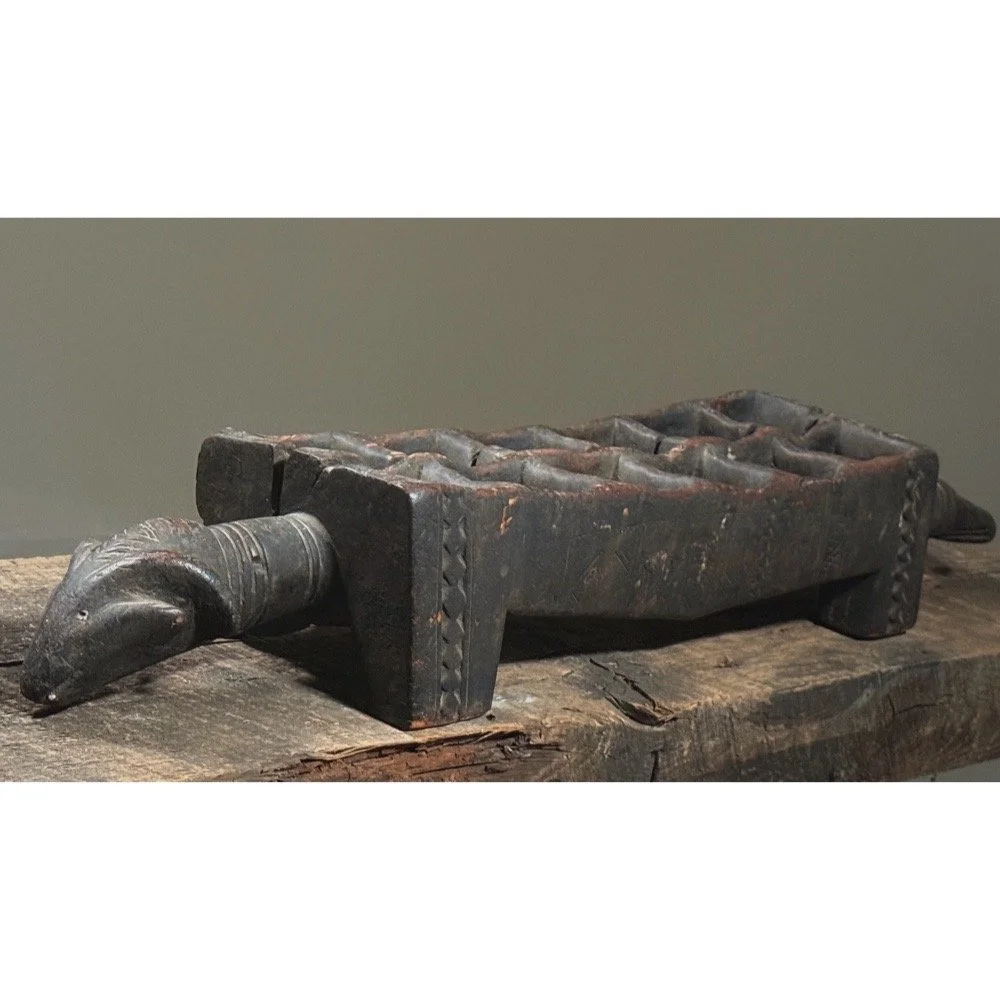 Image 1 of 11
Image 1 of 11

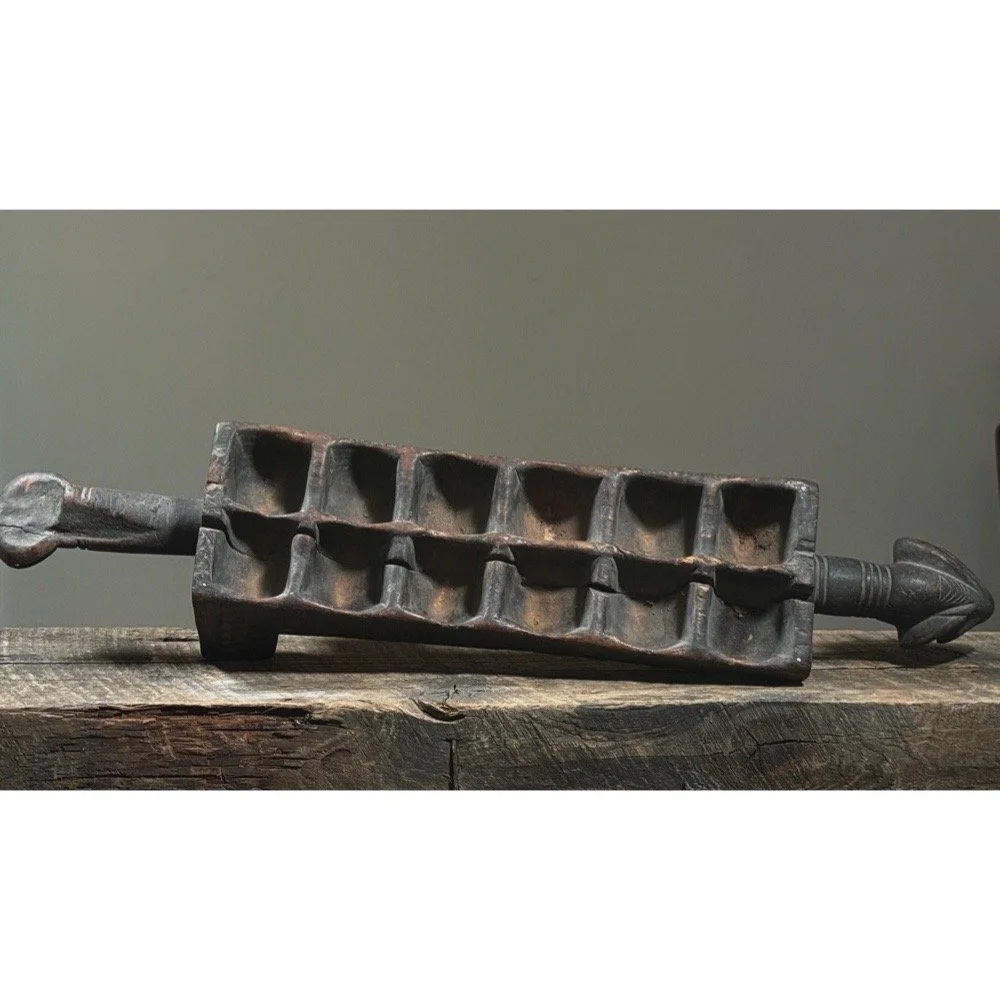 Image 2 of 11
Image 2 of 11

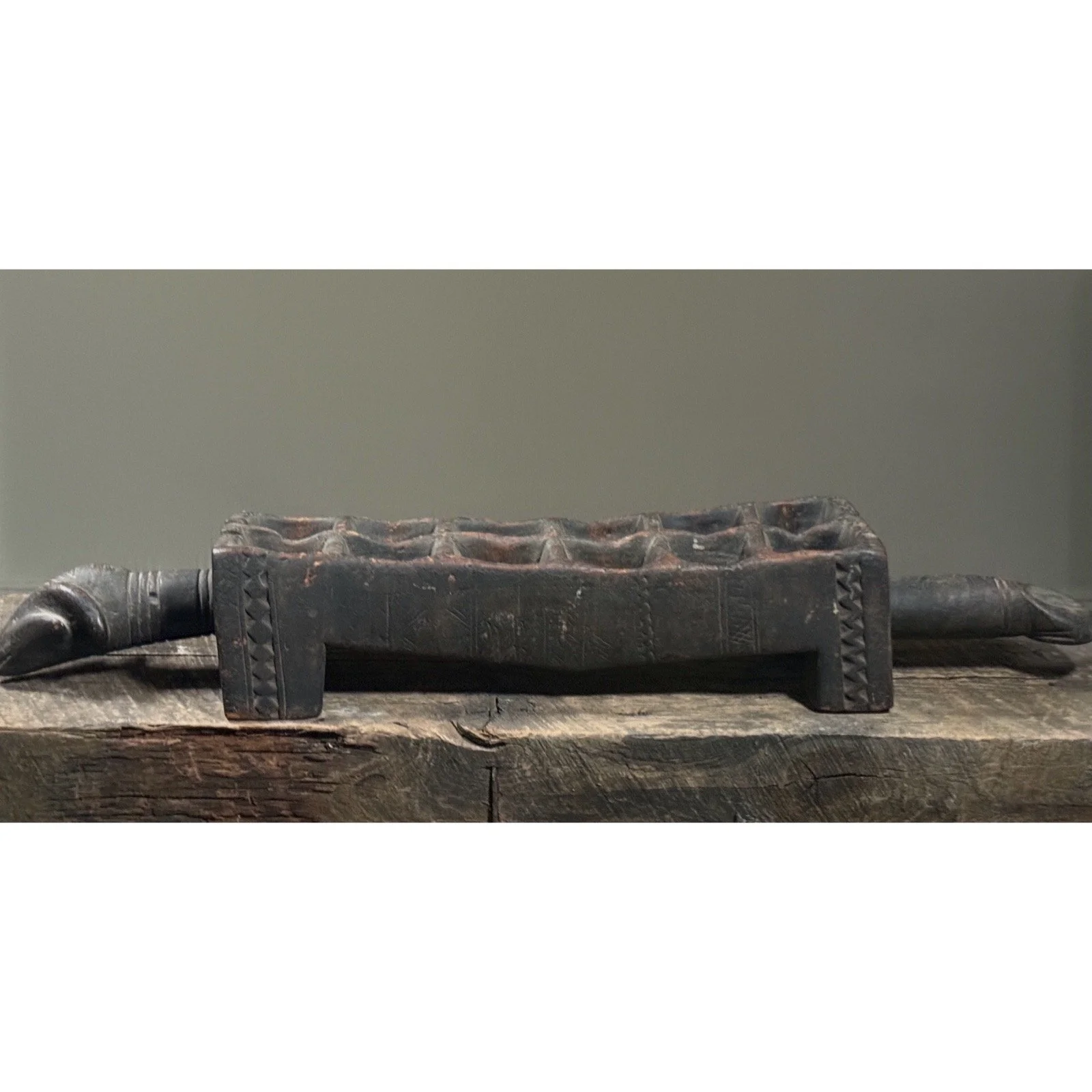 Image 3 of 11
Image 3 of 11

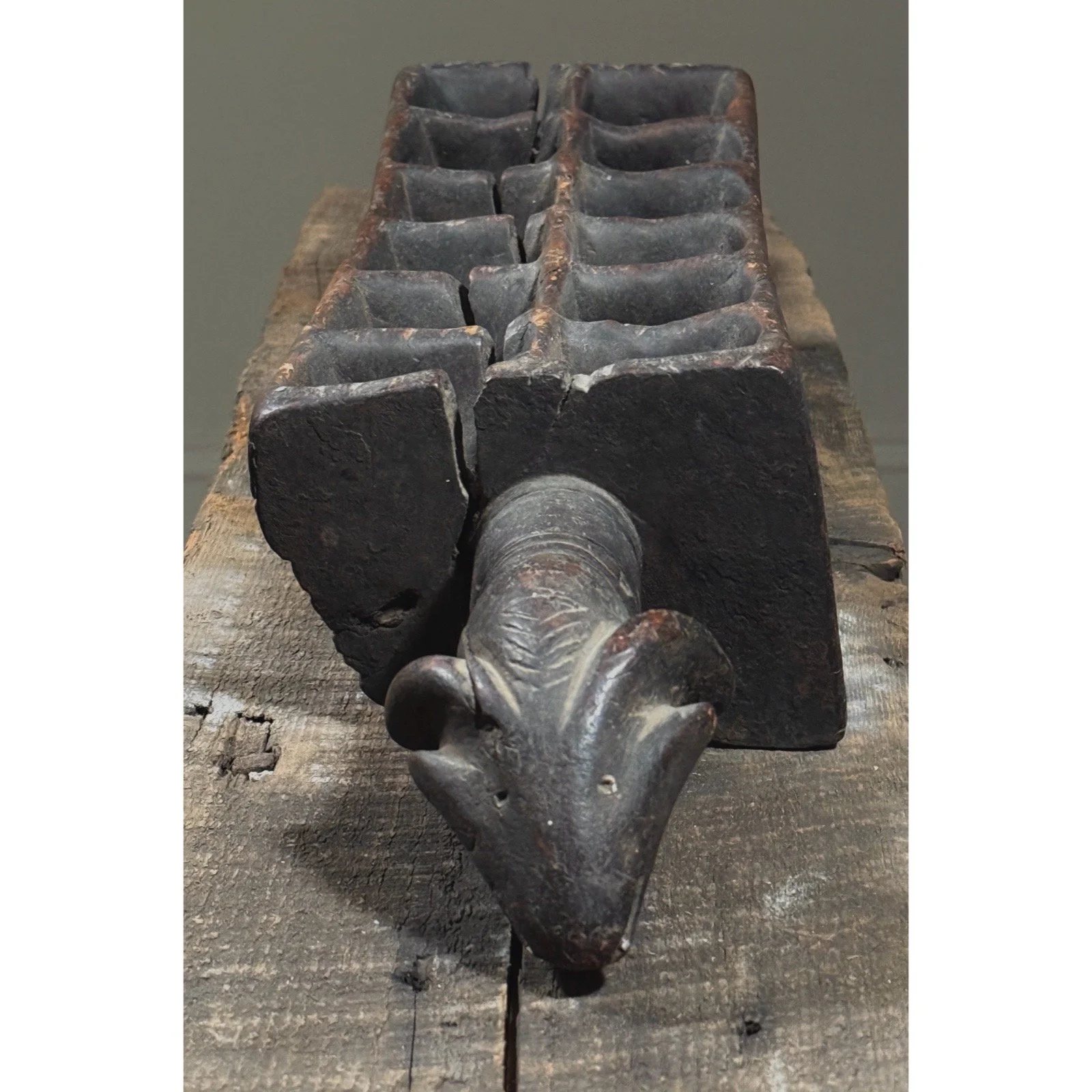 Image 4 of 11
Image 4 of 11

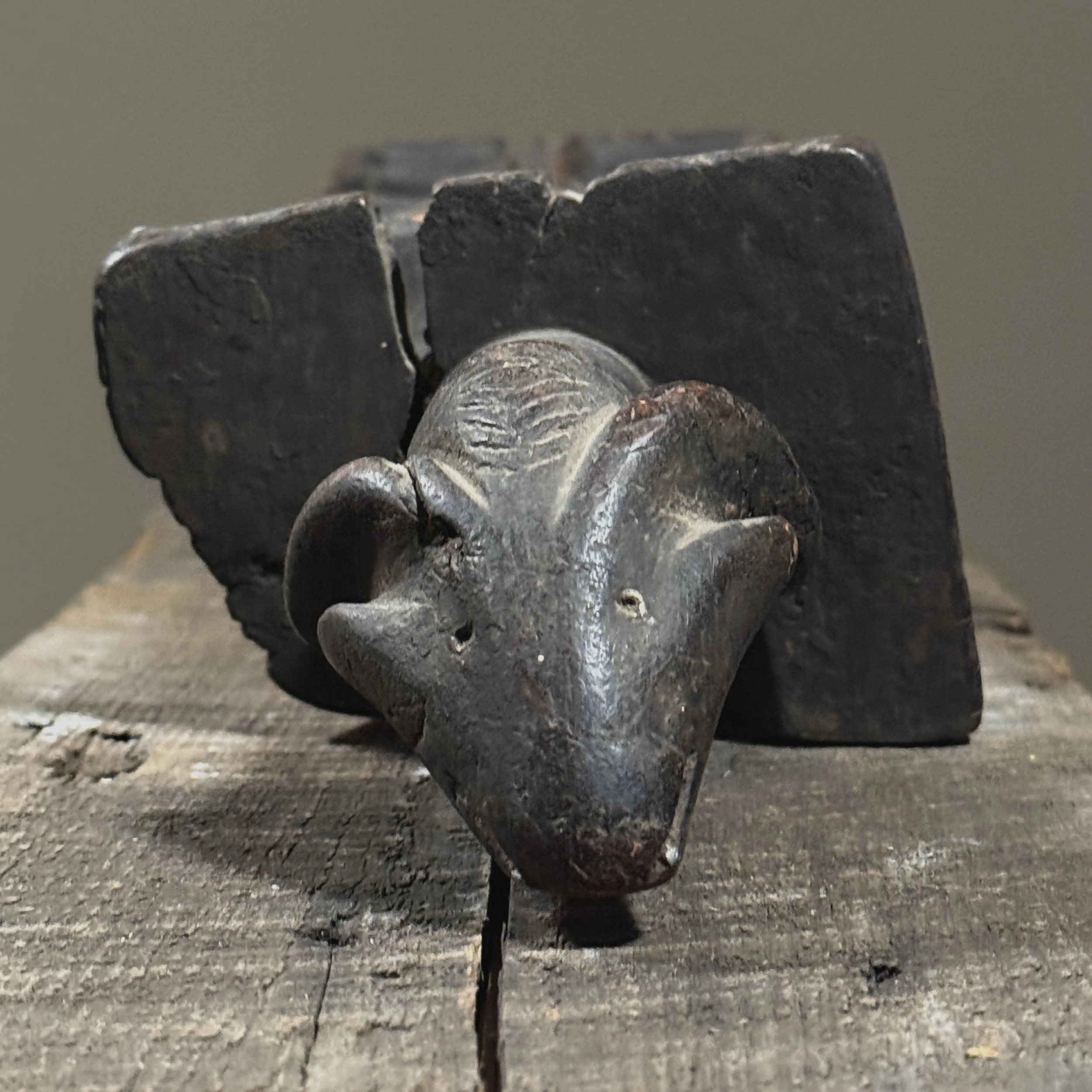 Image 5 of 11
Image 5 of 11

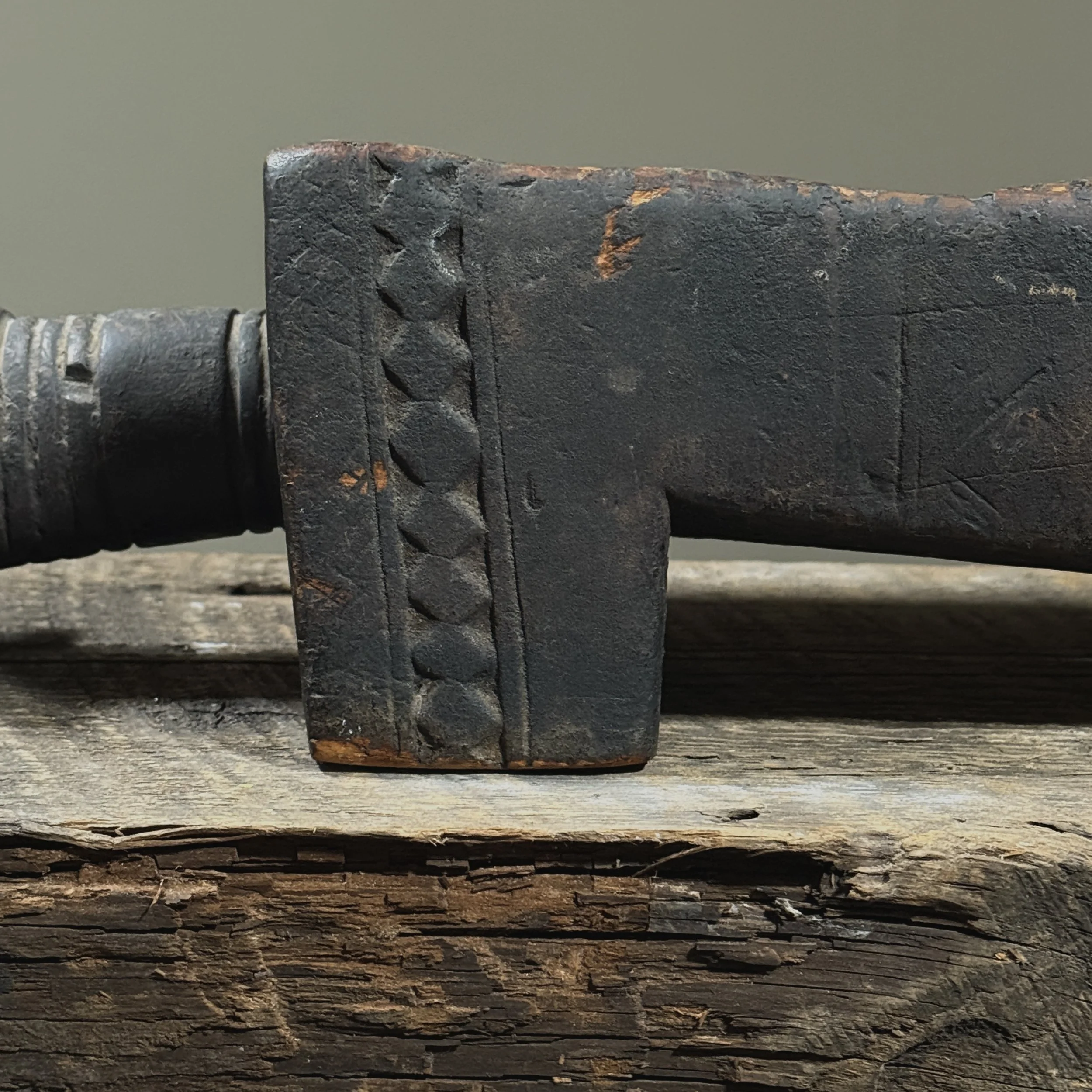 Image 6 of 11
Image 6 of 11

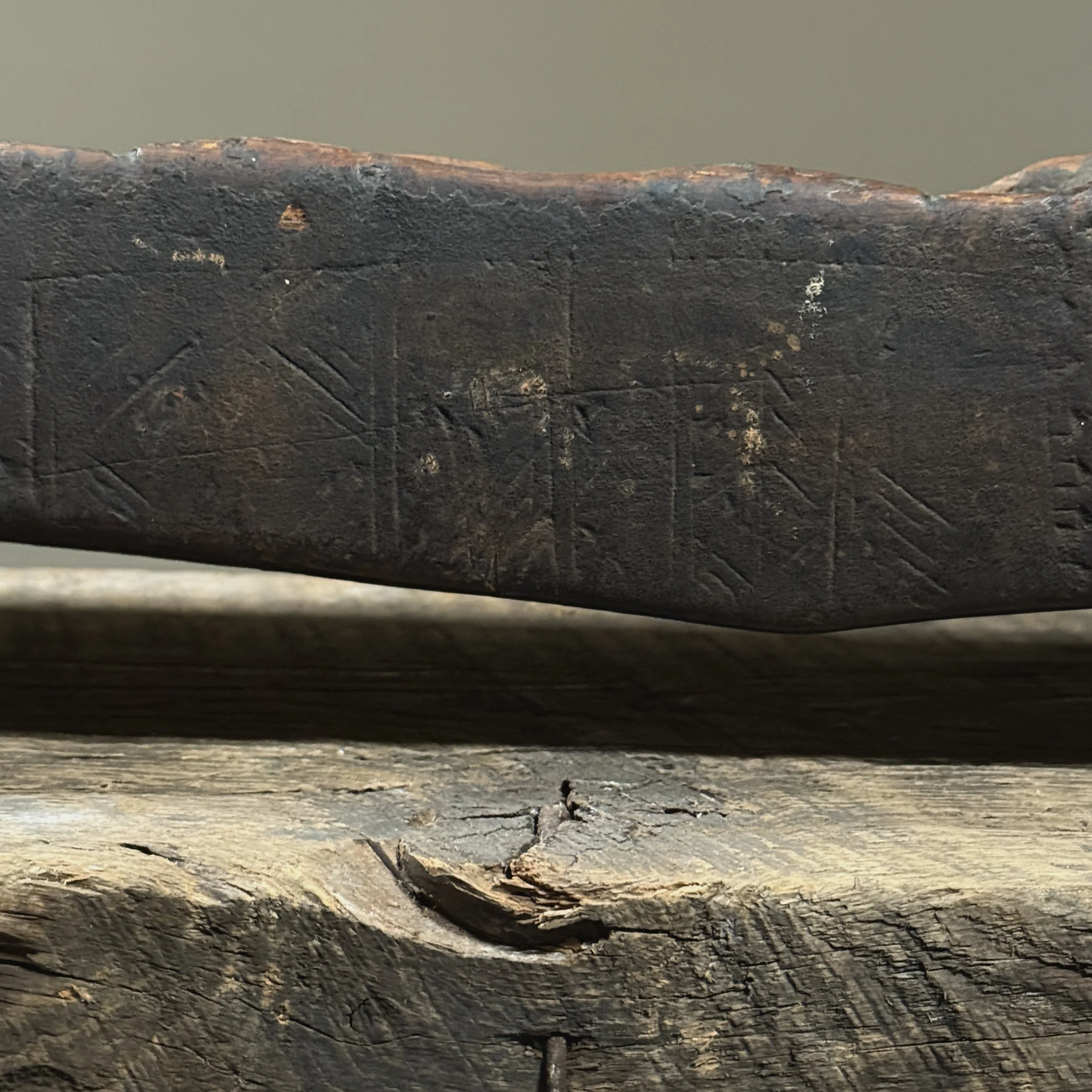 Image 7 of 11
Image 7 of 11

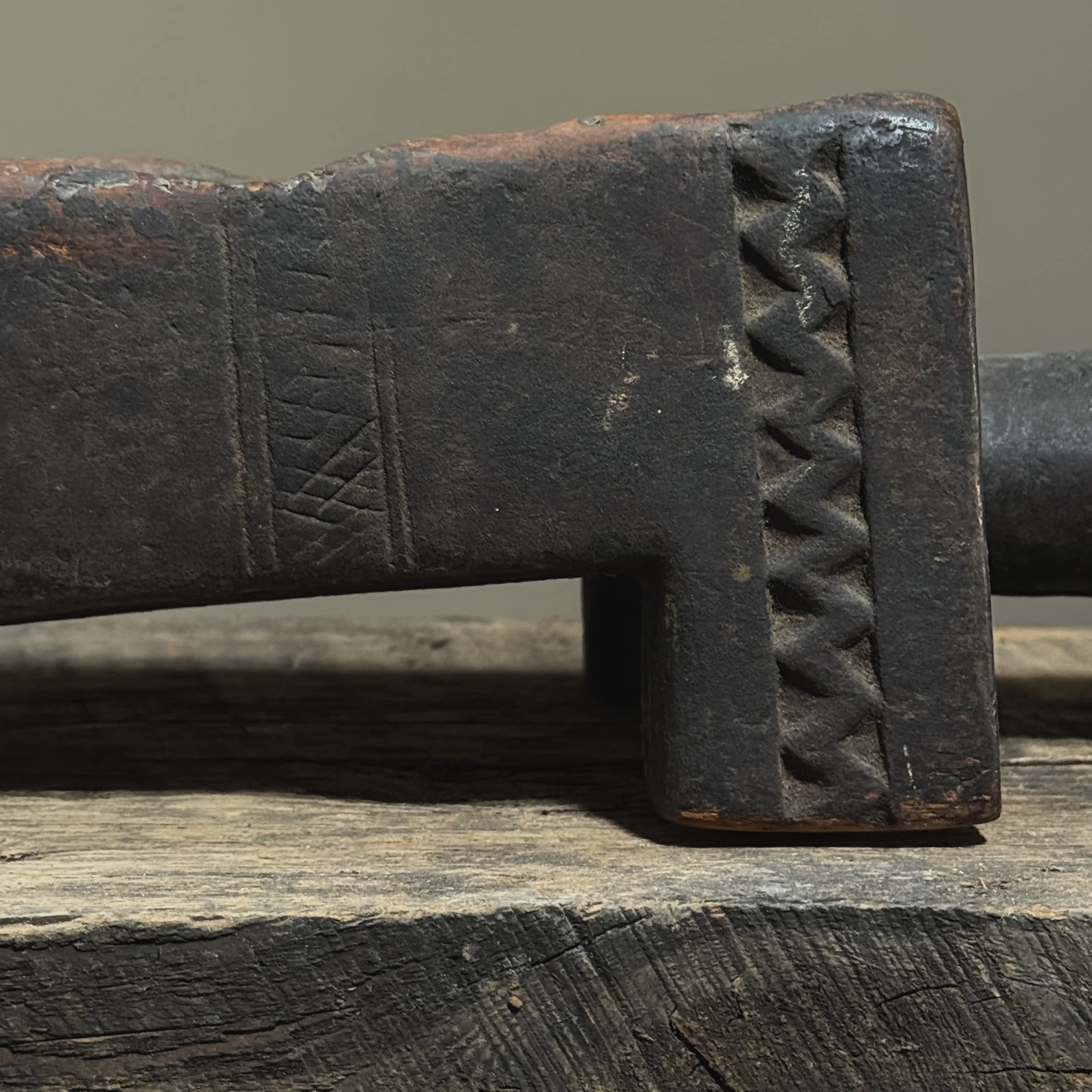 Image 8 of 11
Image 8 of 11

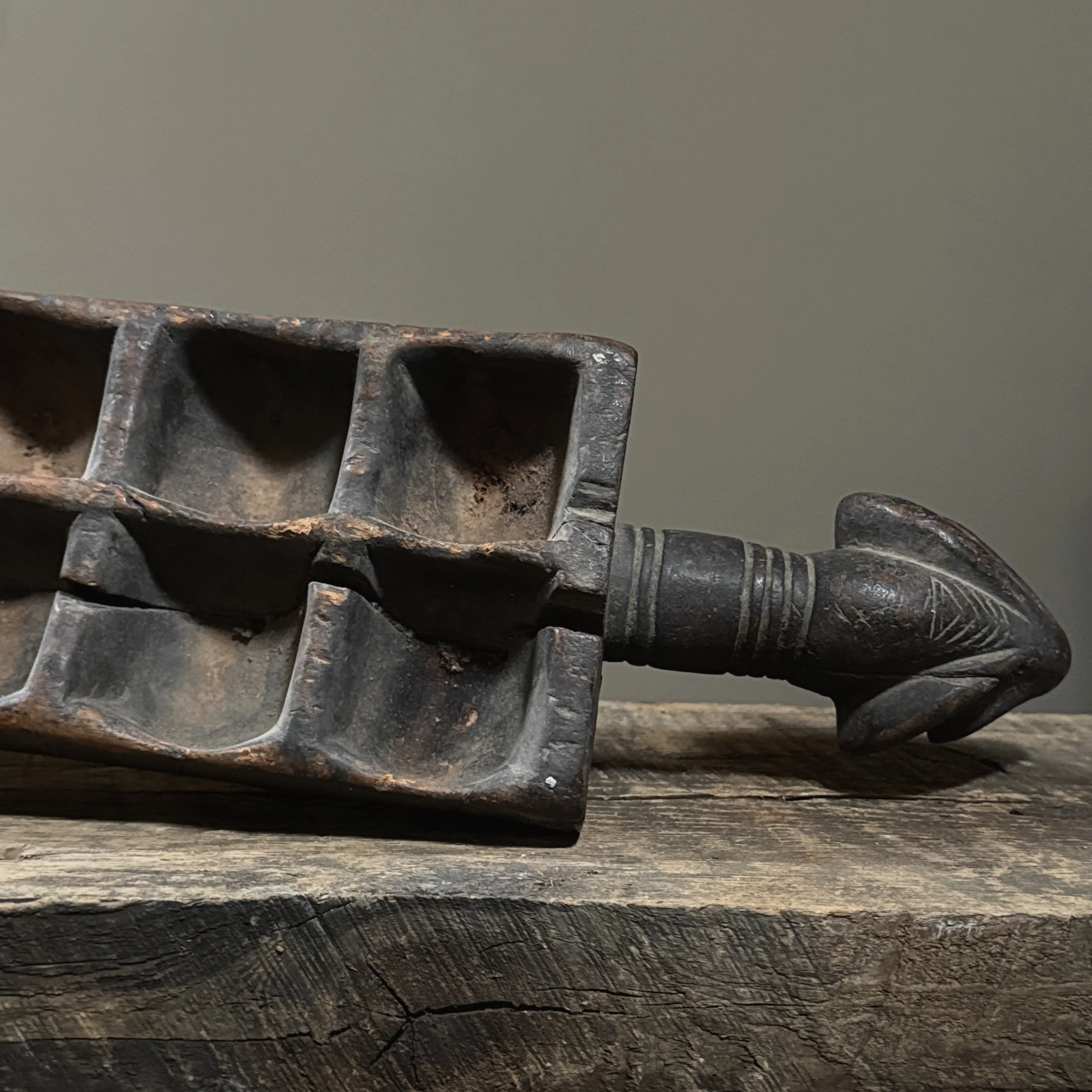 Image 9 of 11
Image 9 of 11

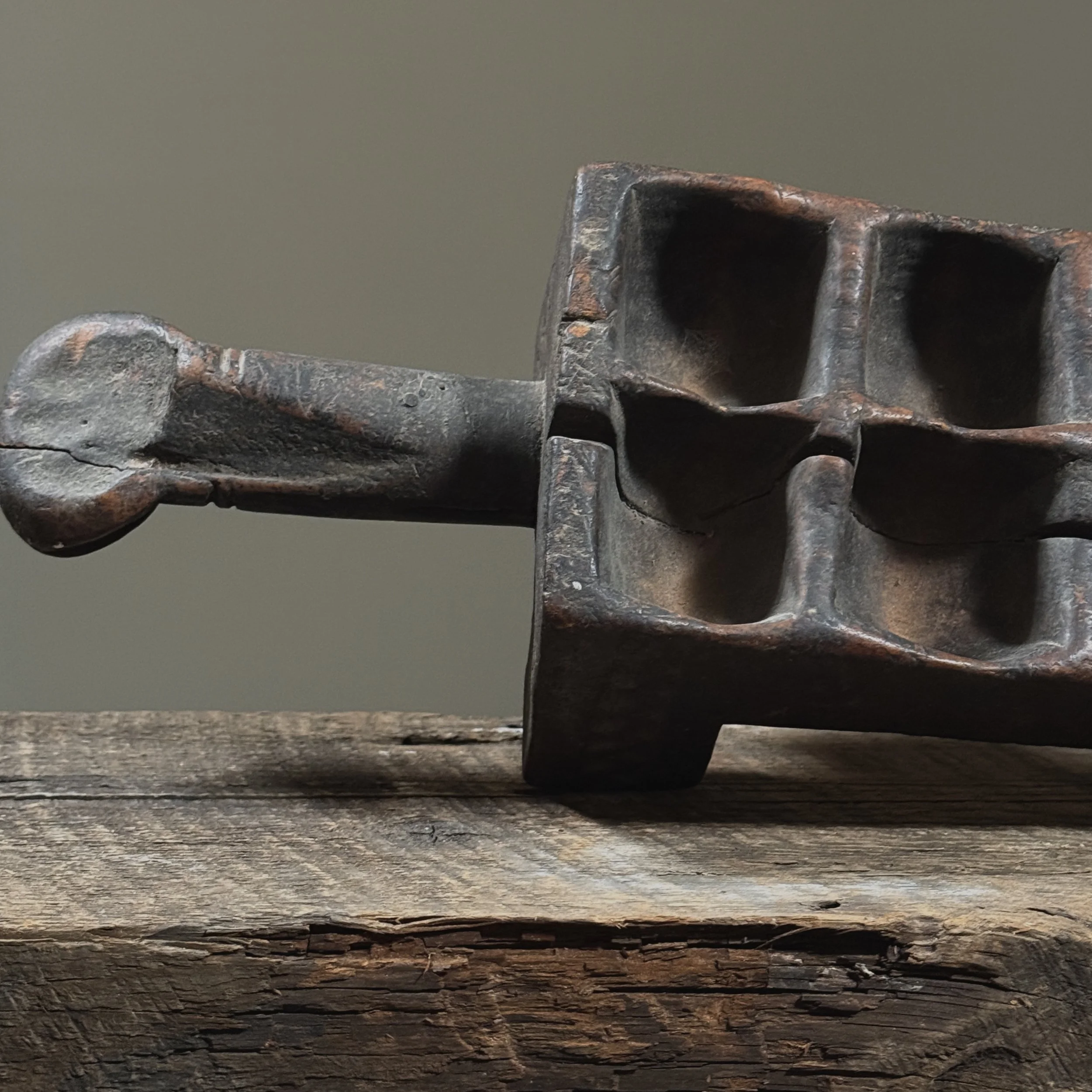 Image 10 of 11
Image 10 of 11

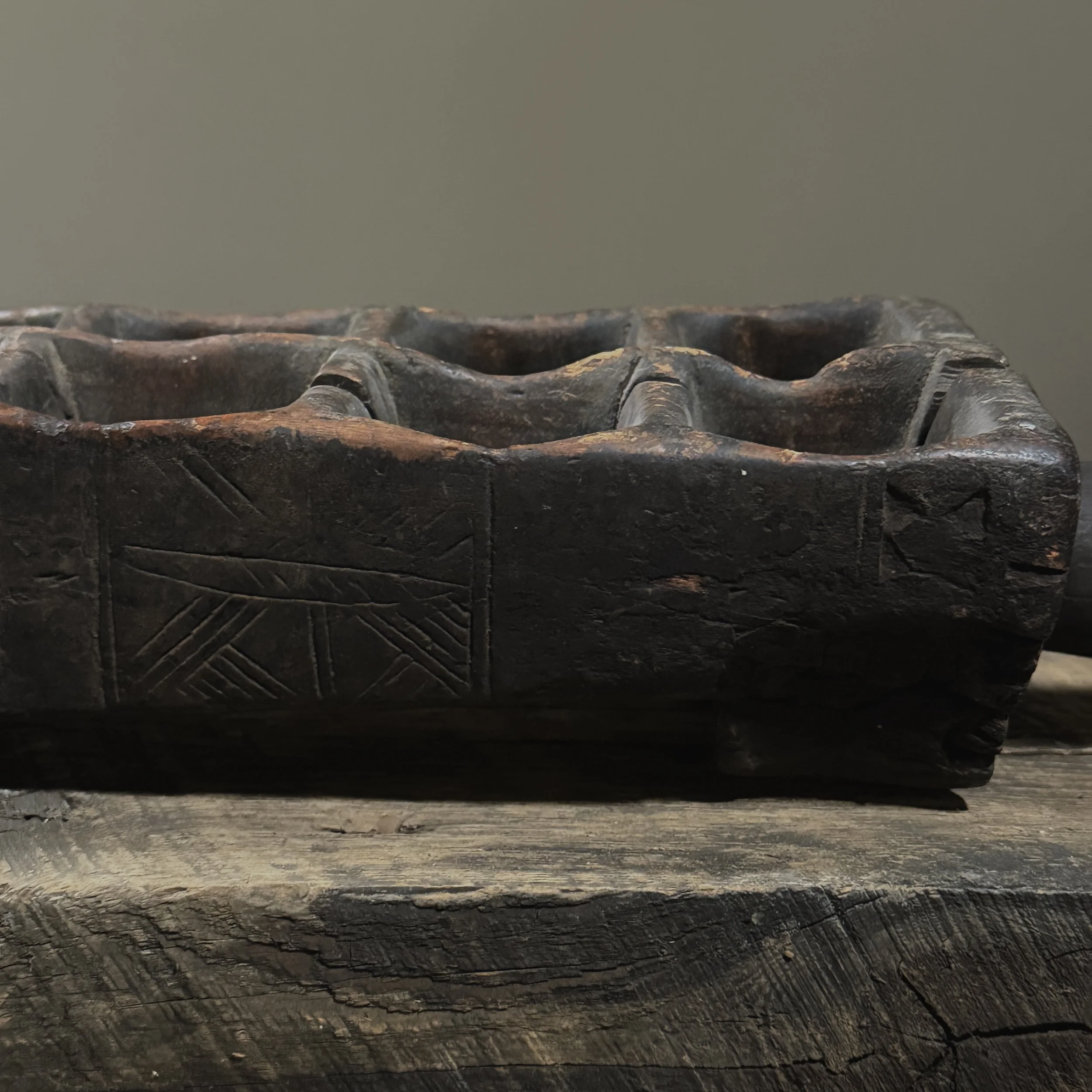 Image 11 of 11
Image 11 of 11












Antique Hand Carved African Zoomorphic Mancala Board
Antique Hand Carved African Zoomorphic Mancala Board
Date: Late 19th to early 20th century
Region: West Africa (possibly Nigeria, Ghana, or Côte d’Ivoire)
Medium: Hand-carved hardwood
Dimensions: 28.75 × 5 × 4 in. (73 × 12.7 × 10.2 cm)
Condition: One leg damaged; surface wear and patina consistent with age and use
Description
The object rests on four legs, one of which is partially damaged, and features a series of carved depressions along its upper surface used for the traditional mancala game. The sides are incised with geometric patterning.
The board’s zoomorphic character suggests symbolic associations beyond its utilitarian purpose. The sculptural form likely references an animal spirit.
Cultural Context
Mancala (known locally by names such as Oware, Ayo, or Bao) is among the oldest known games in the world, with roots extending deep into African antiquity. Boards such as this one were often integral to communal and domestic life, serving as both recreational tools and expressions of craftsmanship. In some societies, elaborately carved examples signified social status or were reserved for elders and leaders.
While the specific tribal attribution remains undetermined, the formal and decorative qualities align with West African carving traditions found among the Akan, Yoruba, and Baule peoples.
Exhibition & Comparative Examples
Comparable carved mancala boards can be found in the collections of:
The Metropolitan Museum of Art, New York (Mancala Game Board, Akan, Acc. no. 1999.170)
The British Museum, London (Oware Board, Ghana, Af1957,17.3)
The Fowler Museum at UCLA (Game Board with Animal Form, West Africa, X86.98)
Antique Hand Carved African Zoomorphic Mancala Board
Date: Late 19th to early 20th century
Region: West Africa (possibly Nigeria, Ghana, or Côte d’Ivoire)
Medium: Hand-carved hardwood
Dimensions: 28.75 × 5 × 4 in. (73 × 12.7 × 10.2 cm)
Condition: One leg damaged; surface wear and patina consistent with age and use
Description
The object rests on four legs, one of which is partially damaged, and features a series of carved depressions along its upper surface used for the traditional mancala game. The sides are incised with geometric patterning.
The board’s zoomorphic character suggests symbolic associations beyond its utilitarian purpose. The sculptural form likely references an animal spirit.
Cultural Context
Mancala (known locally by names such as Oware, Ayo, or Bao) is among the oldest known games in the world, with roots extending deep into African antiquity. Boards such as this one were often integral to communal and domestic life, serving as both recreational tools and expressions of craftsmanship. In some societies, elaborately carved examples signified social status or were reserved for elders and leaders.
While the specific tribal attribution remains undetermined, the formal and decorative qualities align with West African carving traditions found among the Akan, Yoruba, and Baule peoples.
Exhibition & Comparative Examples
Comparable carved mancala boards can be found in the collections of:
The Metropolitan Museum of Art, New York (Mancala Game Board, Akan, Acc. no. 1999.170)
The British Museum, London (Oware Board, Ghana, Af1957,17.3)
The Fowler Museum at UCLA (Game Board with Animal Form, West Africa, X86.98)

